2 Nights in Hotel Brunelleschi
We took a train from Florence to Milan early in the morning, a 2-hour long journey. The vibrant city of Milan is not only the fashion and economic heart of Italy, but also a significant hub for musicians and performers. We spent 2 days in Milan enjoying the following sites, many of which were within walking distance of our hotel. For the few that were not within walking distance, we took an uber.
- II Duomo (Milan Cathedral)
- Galleria Vittorio Emanuele II
- Teatro alla Scala
- Castello Sforzesco
- Parco Sempione
- Santa Maria della Grazie
- GuruWalk
- Naviglio
- Santa Maria Presso San Satiro
We did not have time to visit the following, but they are worth visiting if time permits –
- Leonardo da Vinci’s Last Supper – Did not get tickets
- Leonardo da Vinci National Museum of Science and Technology
- Cimitero Monumentale
- Bosco Verticale (Vertical Forest) in the Porta Nuova district in Milan
II Duomo (Milan Cathedral) – The massive Cathedral of Santa Maria Nascente, which the Milanese call just “Il Duomo” is among one of the world’s largest churches and can hold up to 40,000 people. It is the ultimate example of the Flamboyant Gothic style. Construction of this church began in the 14th century, but its façade was not completed until the early 1800s, under Napoleon.
Ticketing Info – We had bought online tickets to see all the sites within the Duomo complex. Combo ticket to visit the church (May 2025) was €32. The time you select online is for visiting Duomo terrace using the elevator. The Combo ticket includes –
- Elevator access to Duomo Rooftop (we picked time of 2pm)
- Duomo Interior
- Duomo Museum
- Archaeological Area
- St. Charles Crypt
Tickets are valid for 2 days (date selected and following day), with one access for each area. The time and day selected is for visiting the Duomo terrace. The descent from the terrace is via stairs and will lead you to the interior of the Cathedral. So, you DONT HAVE TO STAND IN LINE TO GET INSIDE THE CATHEDRAL.
We first spent some time walking around the Cathedral and admiring the many spires and gargoyles. Each spire is topped with a statue, one of the spires has the statue of David at the top. The purpose of the gargoyles is to drain out the rain water.
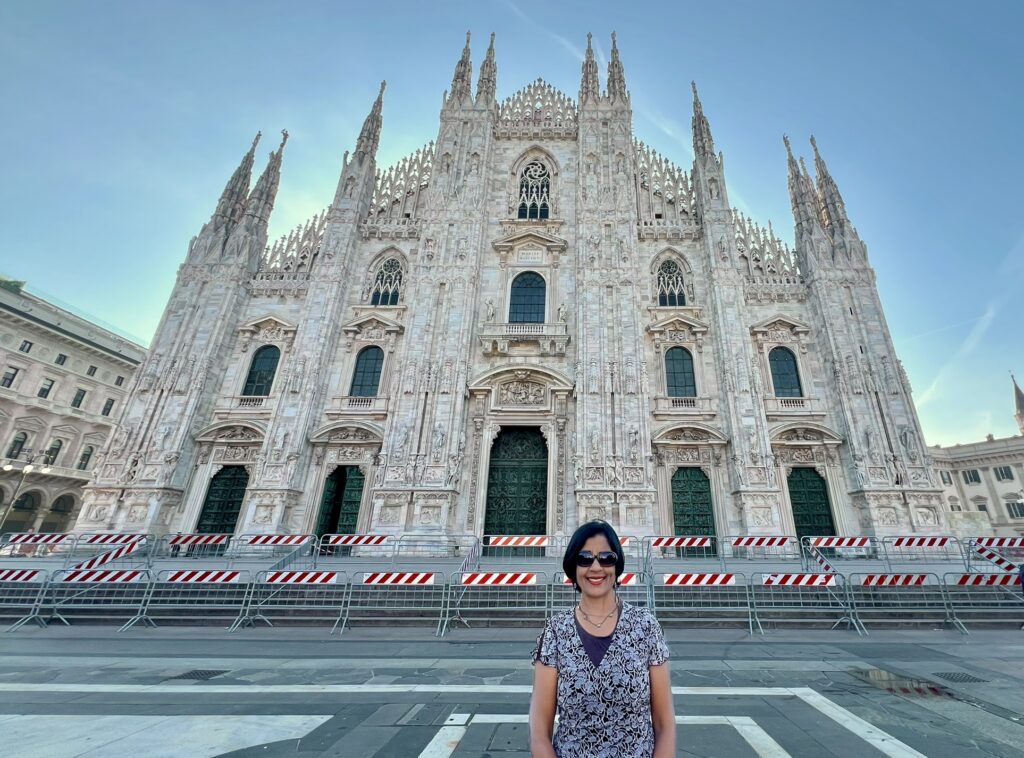
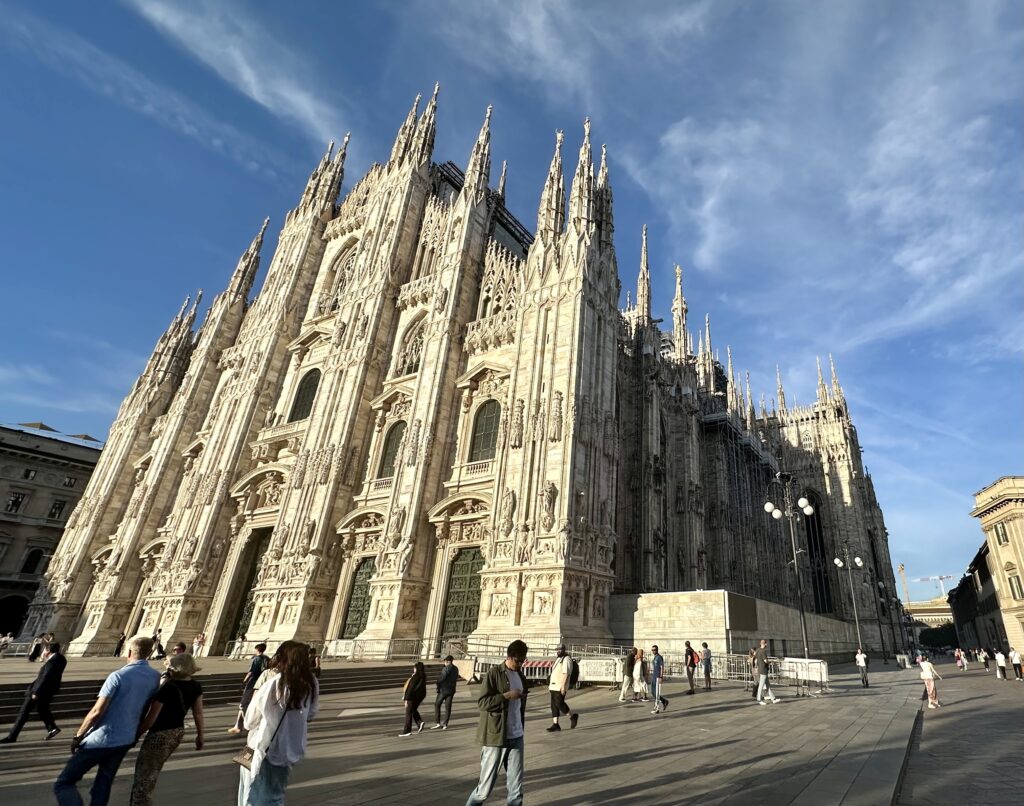
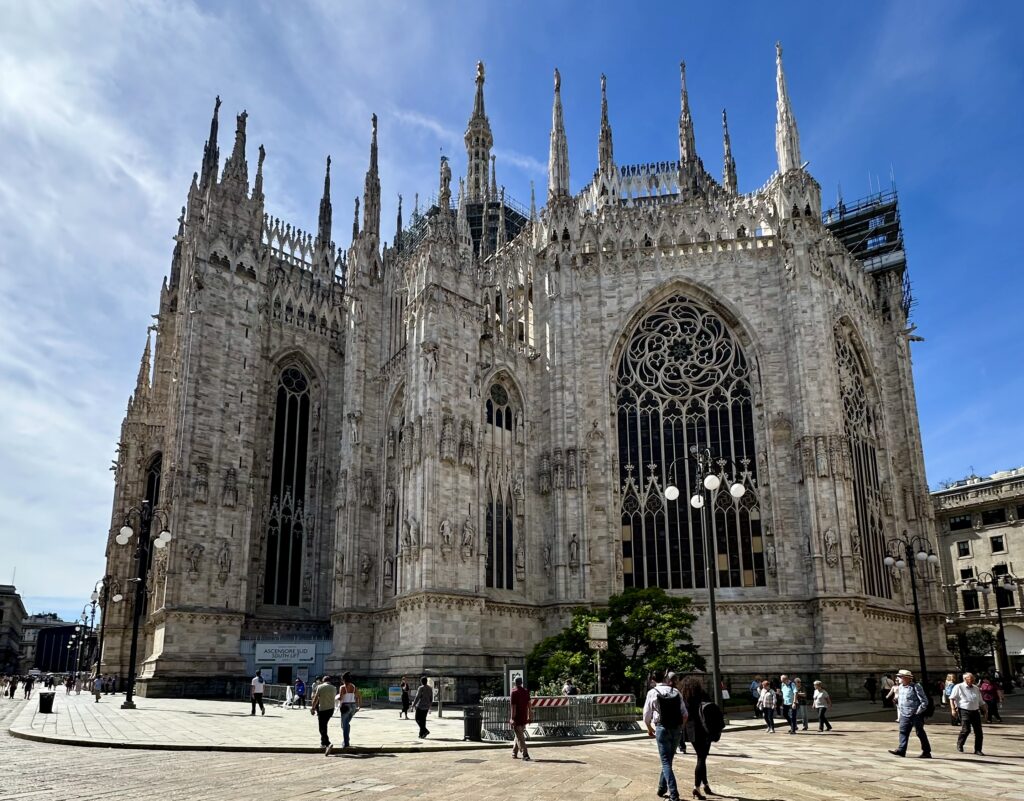
Milan Cathedral, a walk on the Rooftop – Plan on spending an hour here. The roof is topped by 135 delicately carved stone pinnacles and the exterior is decorated with 2,245 marble statues. At every step, there are statues, openings, and passageways waiting to be explored. Lookout for the oldest spire of the Duomo, the Carelli Spire, which takes its name from the most important benefactor in the history of the Cathedral. The original version of the statue is on display in Duomo Museum. There is also the golden Madonnina (statue of the Virgin Mary) that is placed at the top of the main spire.
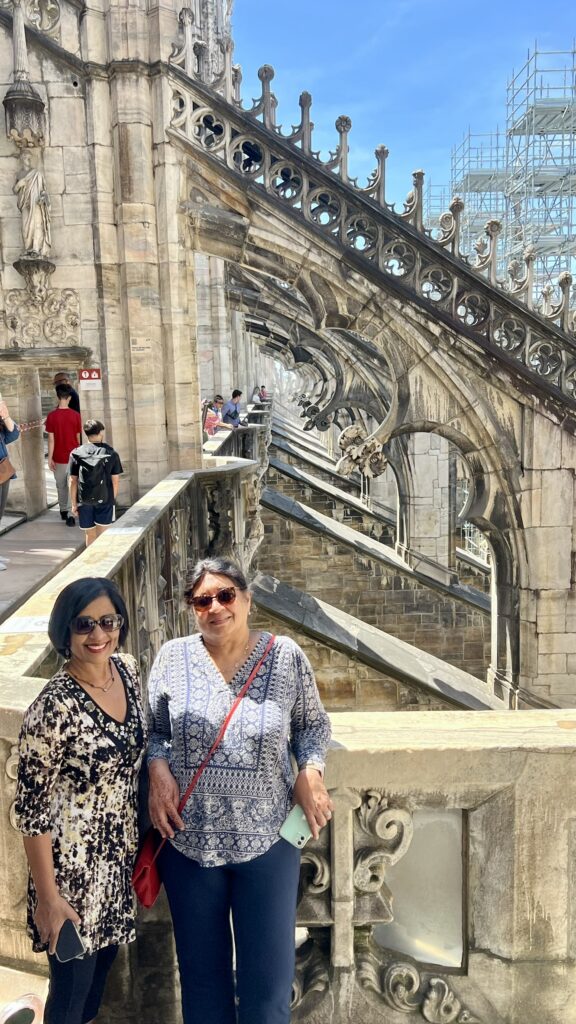
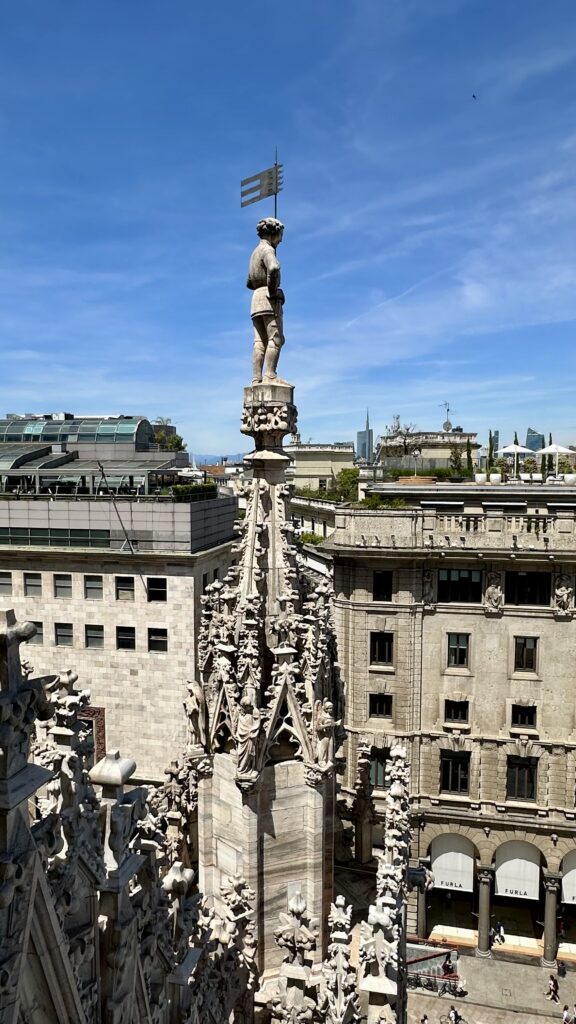
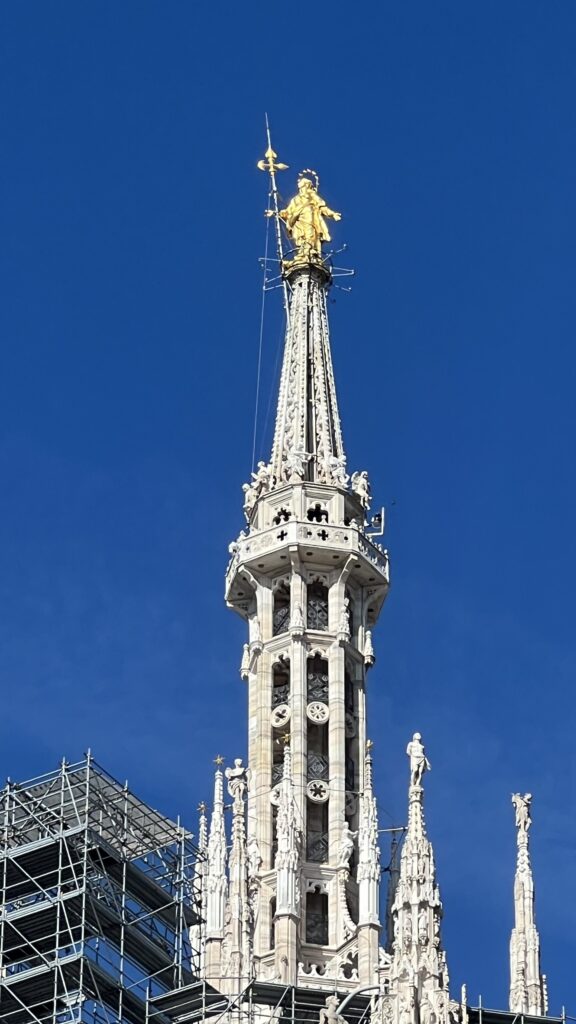
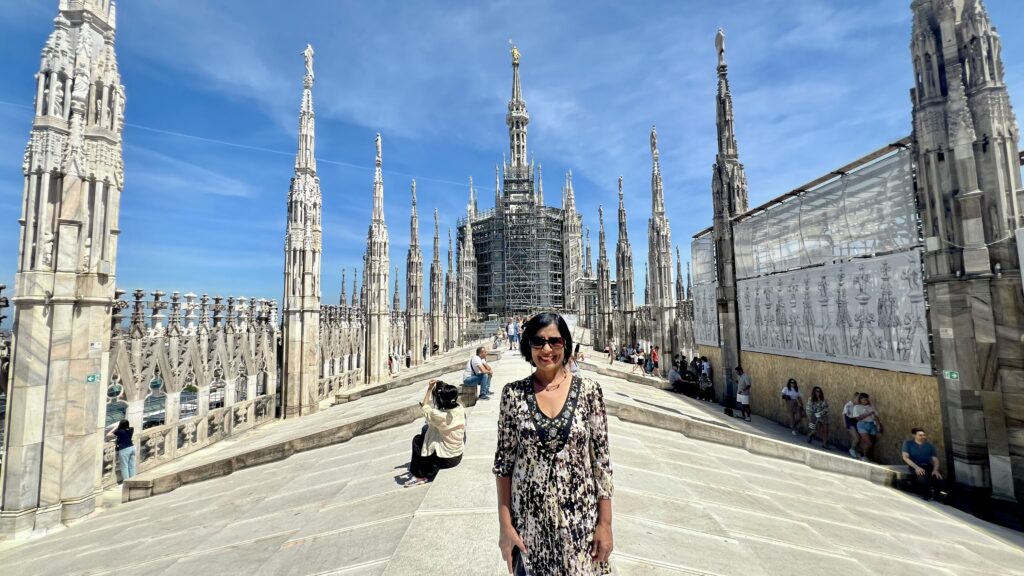
Milan Cathedral, Duomo Interior – After walking around the terrace for close to an hour, we took the stairs down to the cathedral. The interior of the cathedral makes a powerful impression with its 52 gigantic pillars. The stained-glass windows in the nave (mostly 15th-16th centuries) are the largest in the world; the earliest of them are in the south aisle.
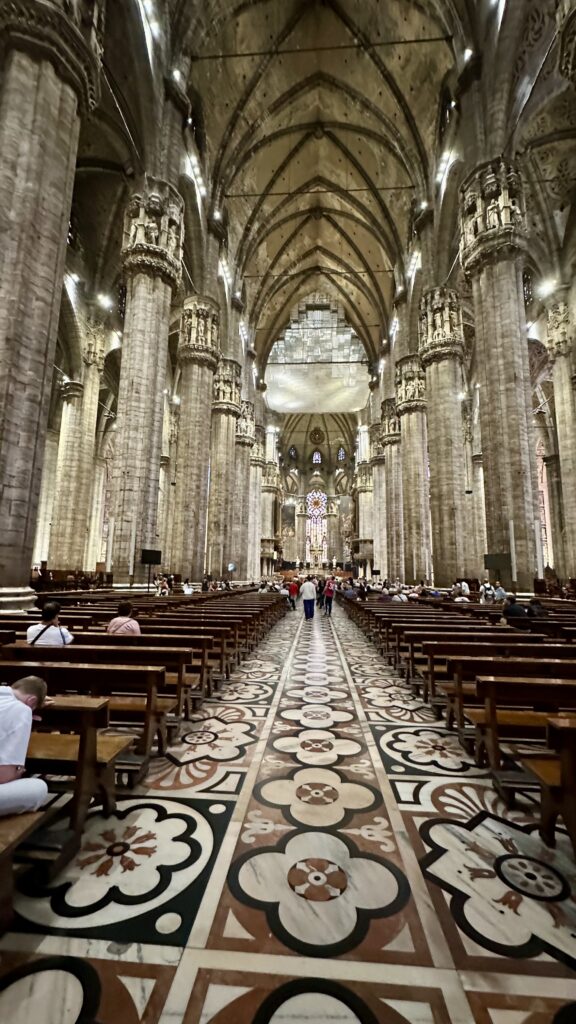
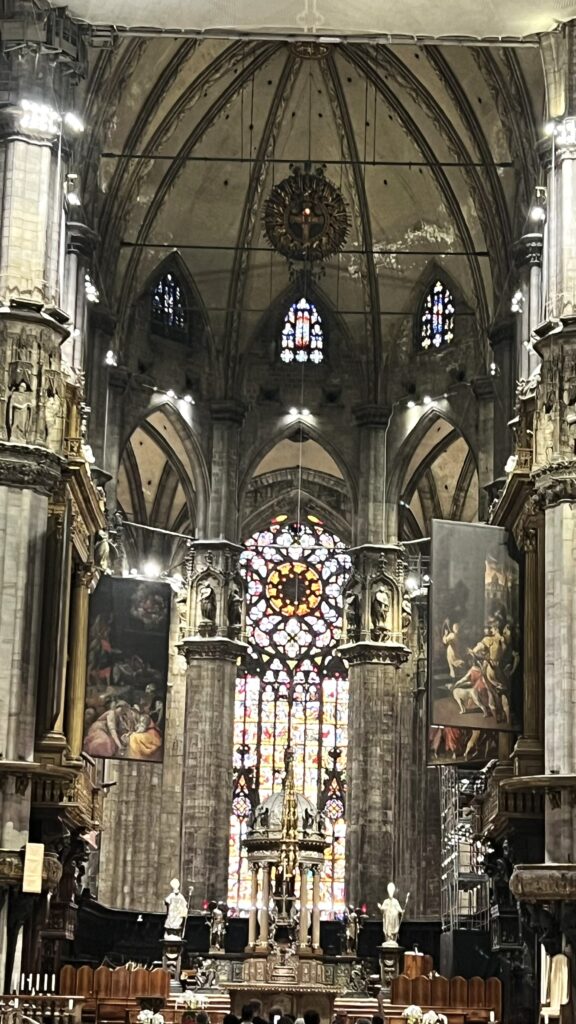
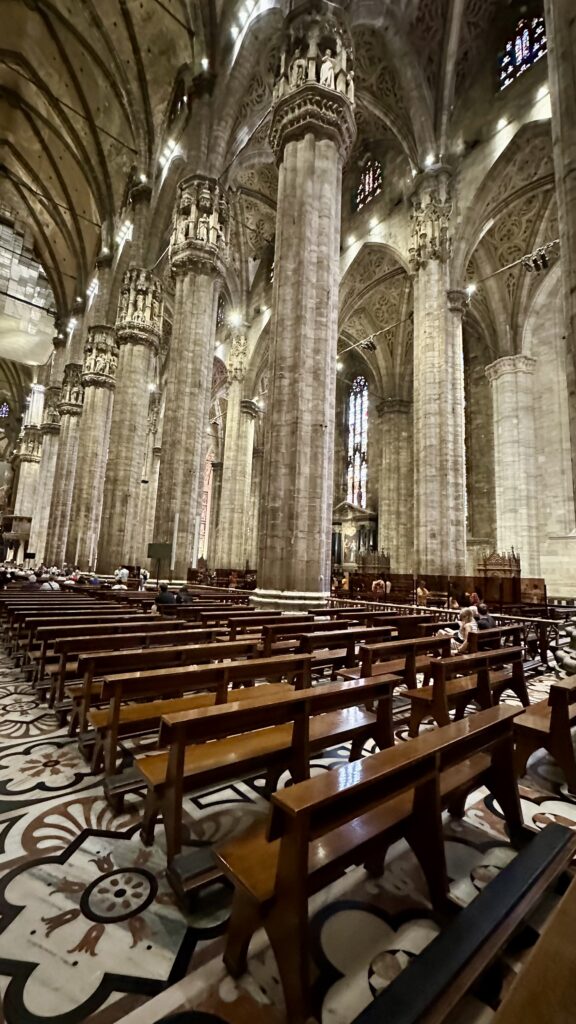
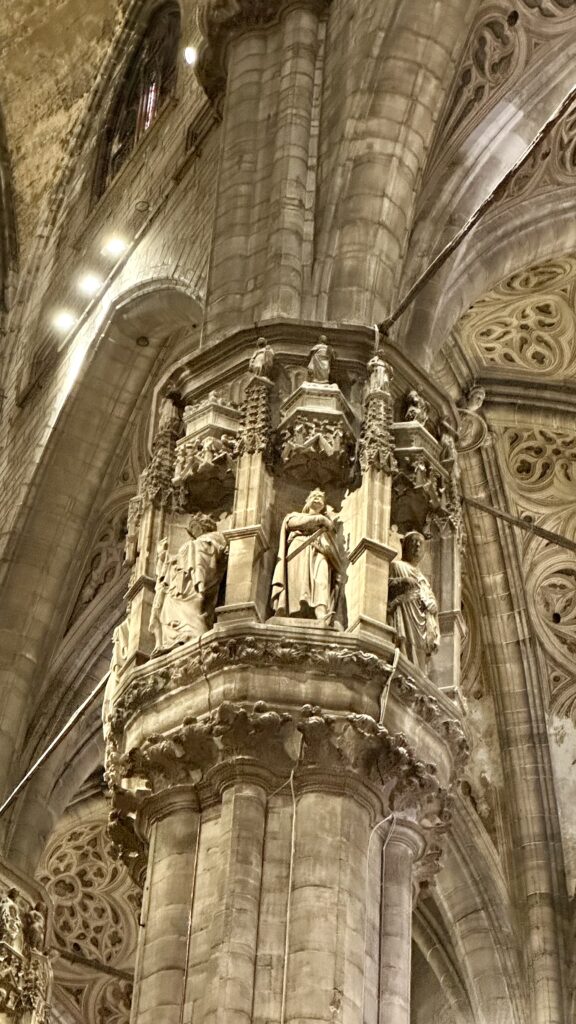
The cathedral interior also has the St. Charles Crypt which can be visited with the combo ticket. Steps lead down to the room that has the Crypt of Charles Borromeo, Archbishop of Milan, whose term lasted from 1564 to 1584.
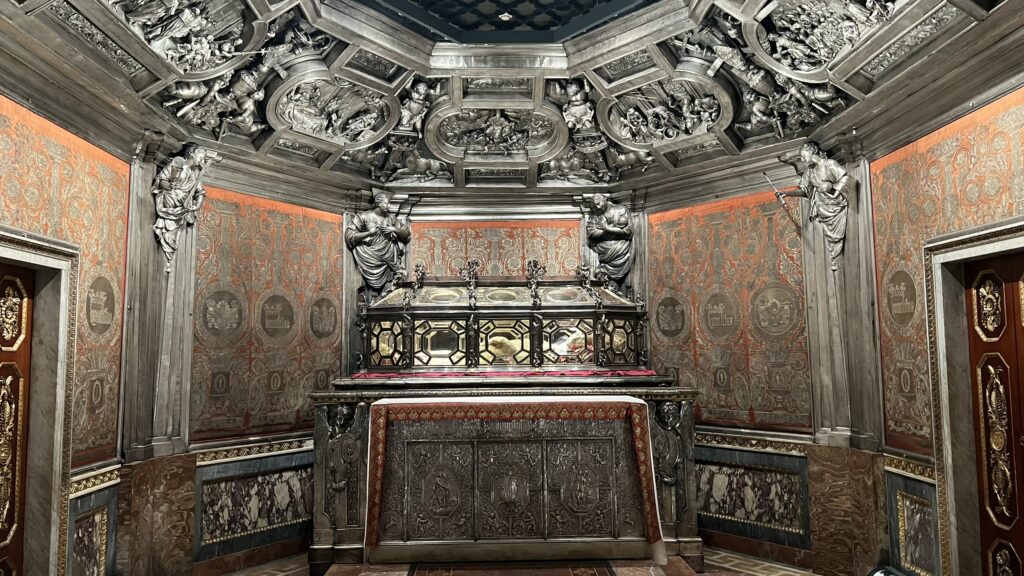
Milan Cathedral, Archaelogical Area – The combo ticket includes a visit this area. At the front of the Duomo, near the central doorway, you can descend under Piazza del Duomo to check out the ruins dating back to Roman times, which were discovered during the construction of the Milan Metro system. Key features of the Archaeological Area –
- Battistero di San Giovanni alle Fonti – This octagonal baptistery, dating back to 387, is where Saint Ambrose is said to have baptized Saint Augustine.
- Basilica di Santa Tecla – This basilica was one of the co-cathedrals alongside the Basilica of Santa Maria Maggiore.
- Graveyard – The area also includes remains of a former graveyard.
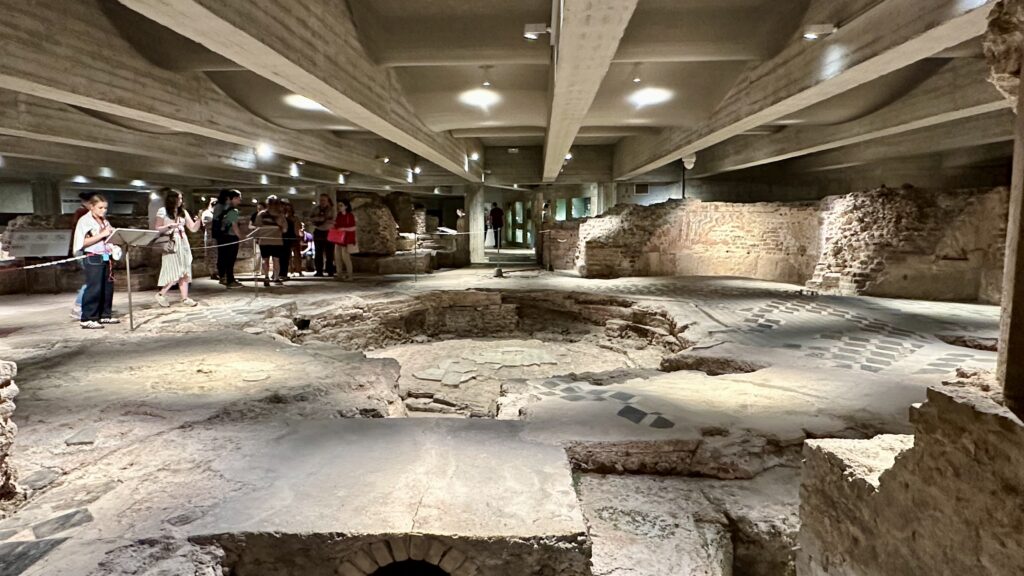
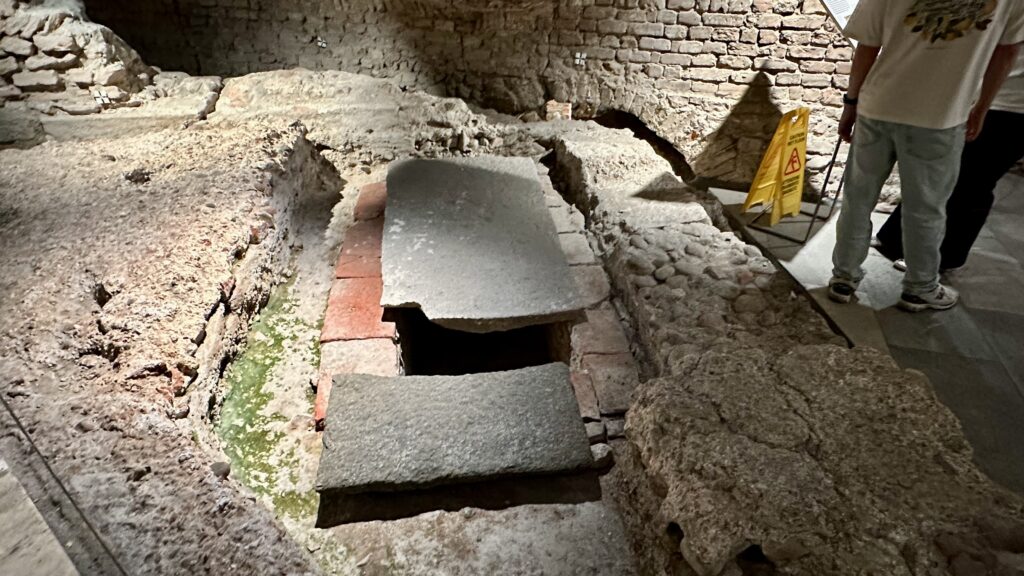
Duomo Museum – Plan on spending an hour here even if you are not interested in reading through every display. This museum has a collection of paintings, sculptures, and treasures from the cathedral. The museum also has a model of the Duomo.
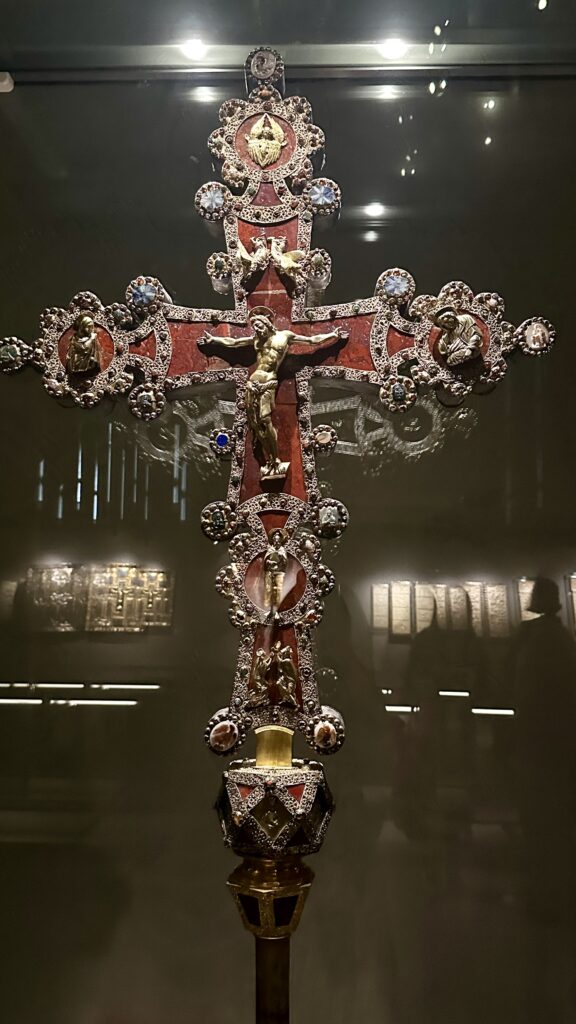
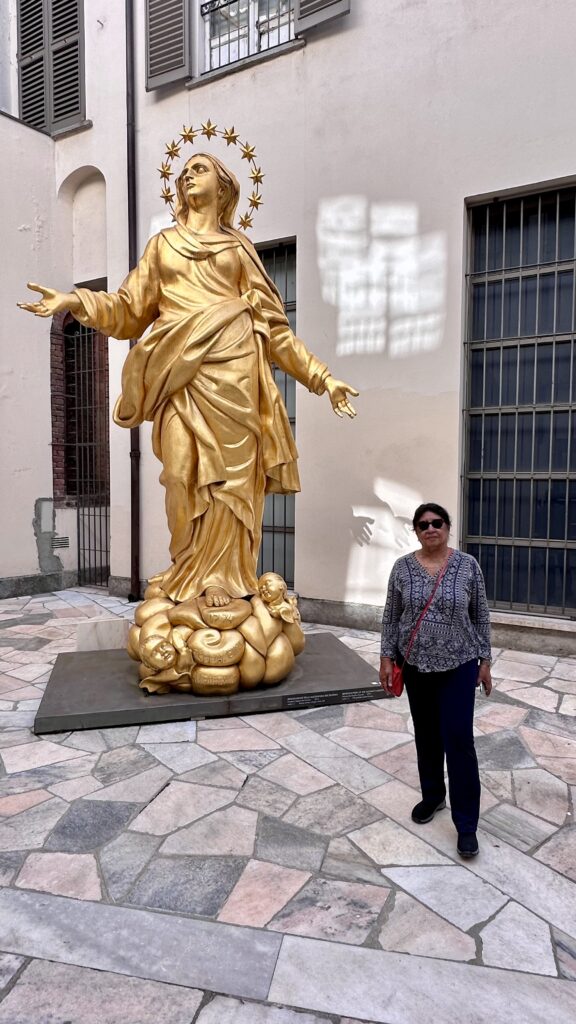
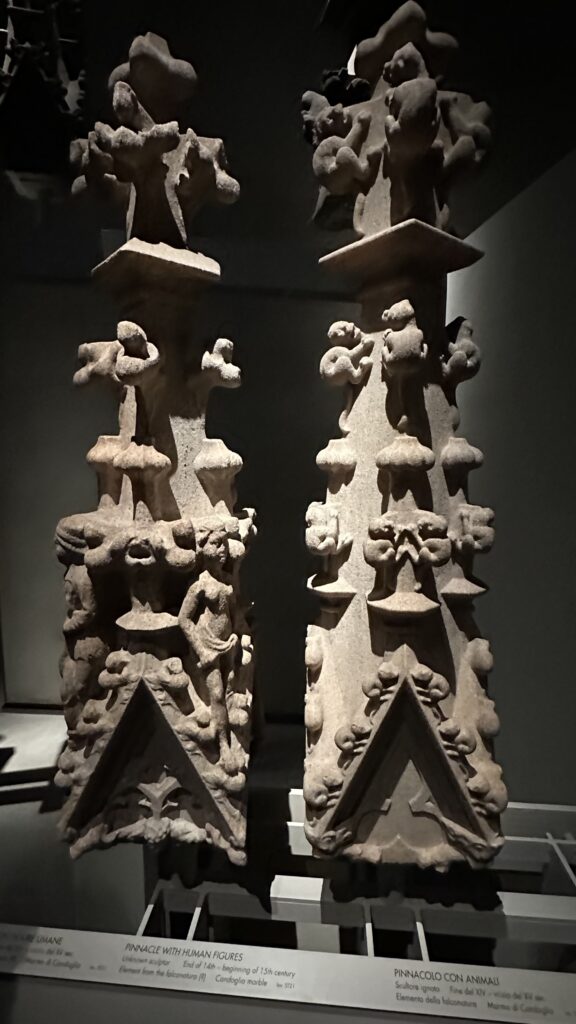
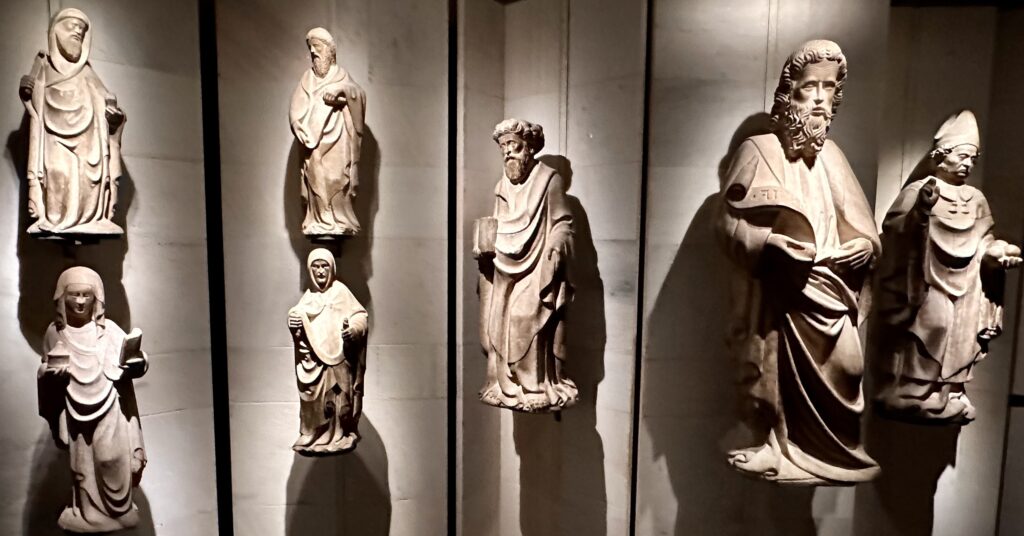
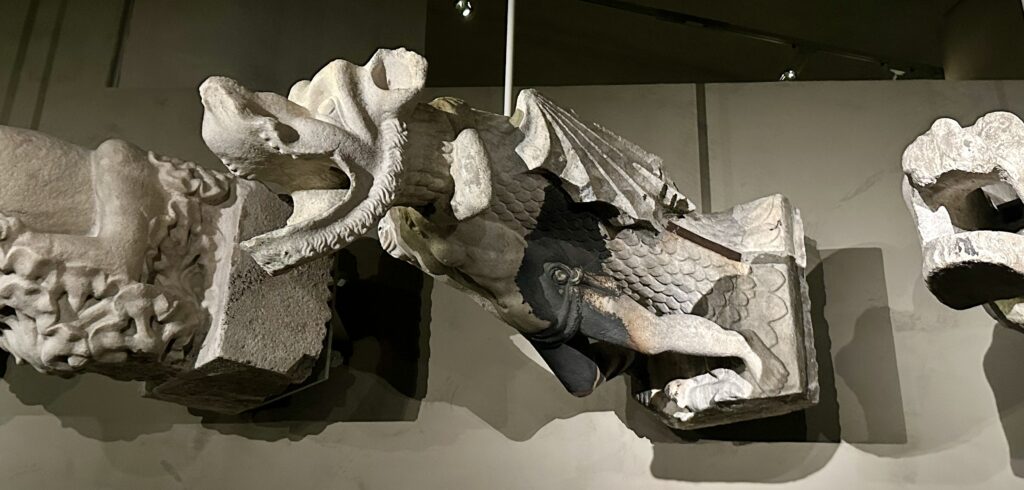
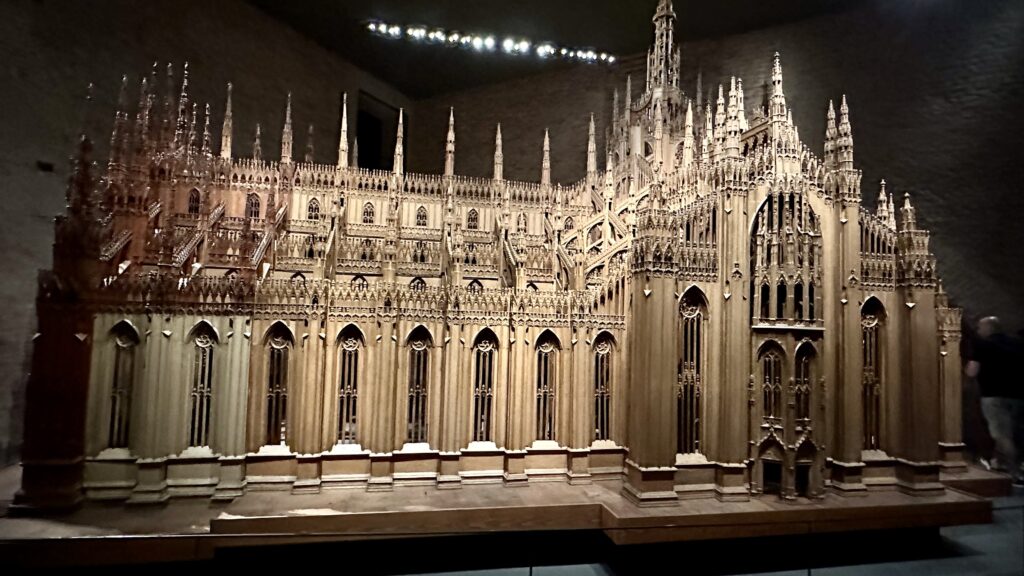
Galleria Vittorio Emanuele II – Forming one side of Piazza del Duomo and opening on the other side to Piazza della Scala, the grand Galleria Vittorio Emanuele is Italy’s oldest active shopping arcade and was designed by Giuseppe Mengoni and built between 1865 and 1877. It was then the largest shopping arcade in Europe, with a glass dome soaring 48 meters above its mosaic floor in the center. The gallery is lined with high end shops and restaurants.
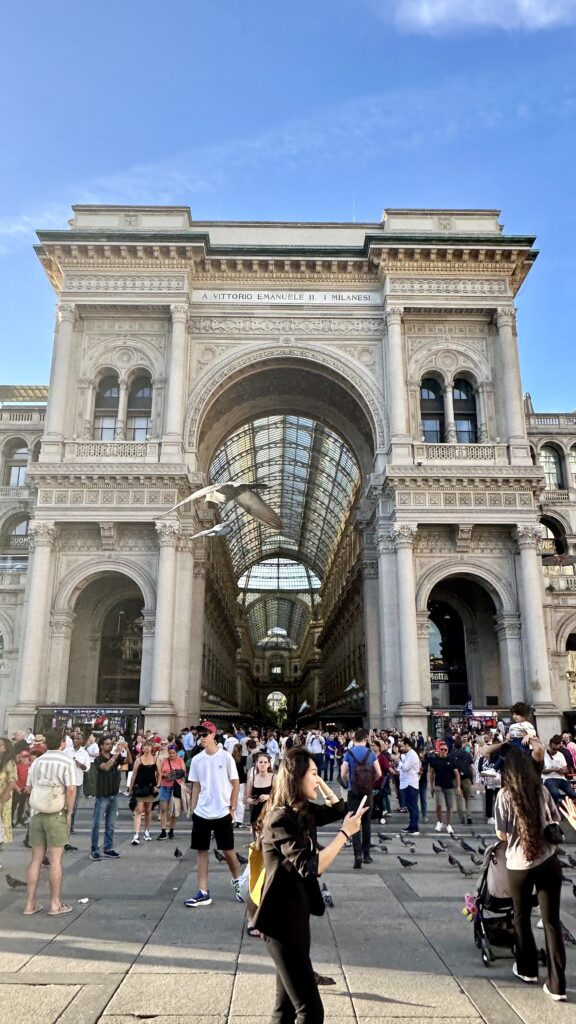
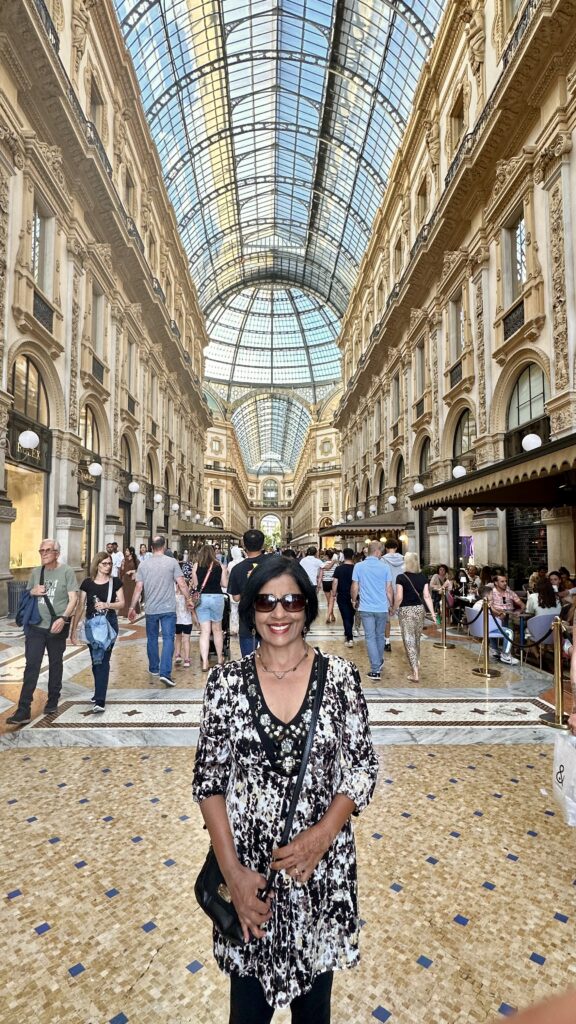
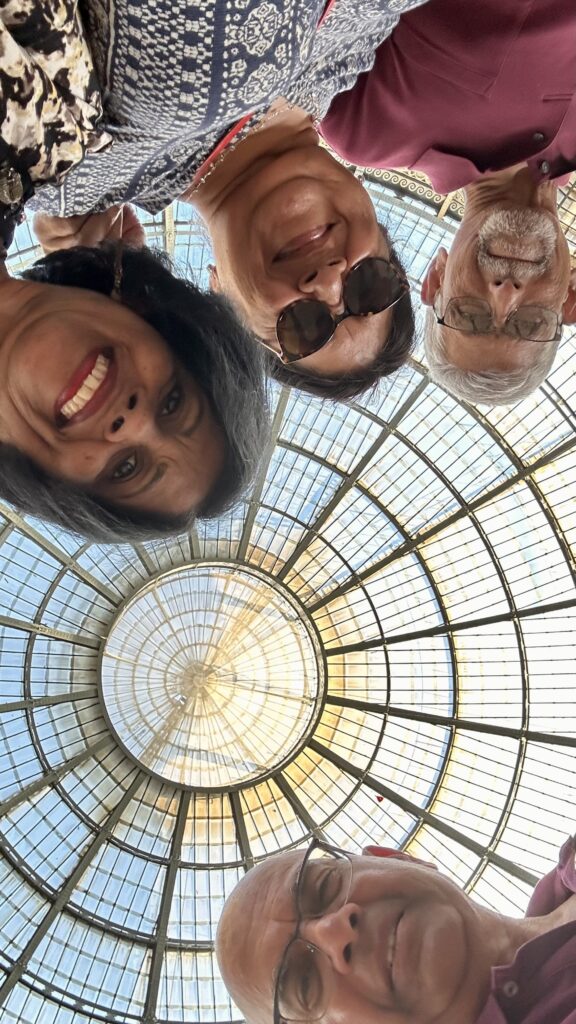
Piazza della Scala – After walking the entire length of the stunning Galleria Vittorio Emanuele II, you will end up in a pedestrian central square, the Piazza della Scala, which is named after the renowned Teatro alla Scala (Opera House), which occupies the north-western side of the square. This plaza is relatively new, as it was enlarged in the mid-nineteenth century when some palaces were demolished and the Leonardo Da Vinci monument was placed in the center.
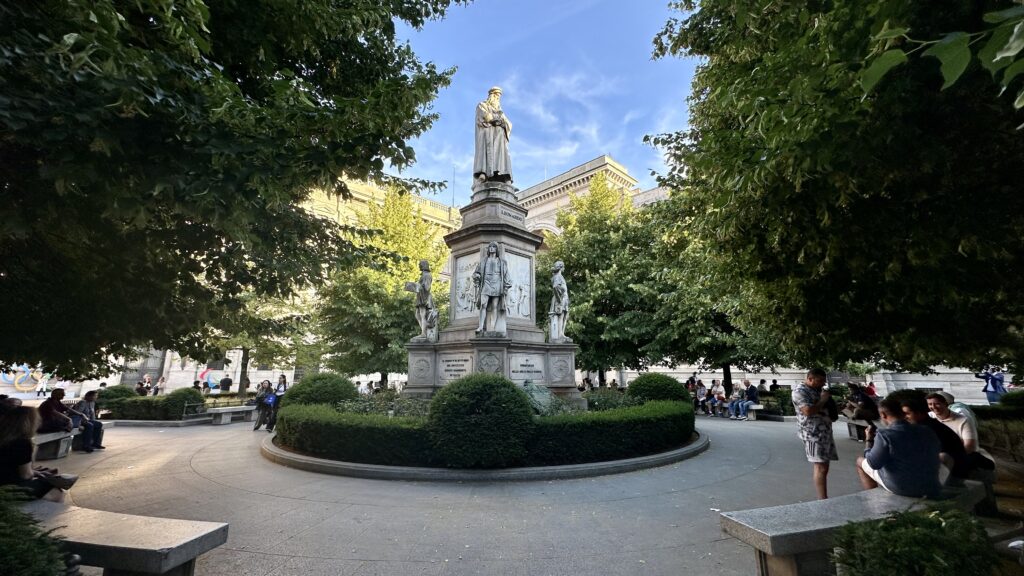
Piazza della Scala, Leonardo Da Vinci monument – was unveiled in 1872. It is surmounted with a statue of da Vinci, while the base has full-length figures of four of his pupils. On the major sides of the octagonal plinth, four marble bas-reliefs depict four aspects of Leonardo’s life in Milan: Leonardo the Painter, which shows him painting the Last Supper in the refectory of Santa Maria delle Grazie; Leonardo the Sculptor, in which he is shown modeling the equestrian status of Francesco Sforza; Leonardo the Architect and Strategist, in which he directs the building of Cesate Borgia’s fortifications in Romagna; and Leonardo the Plumber, in which he attends to the pipeline work for the irrigation of Lombardy.
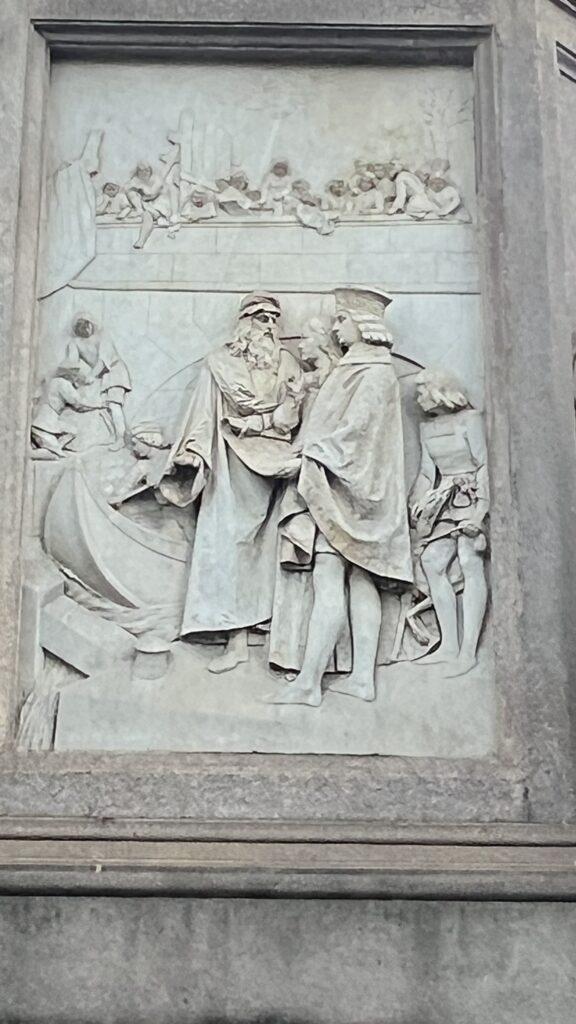
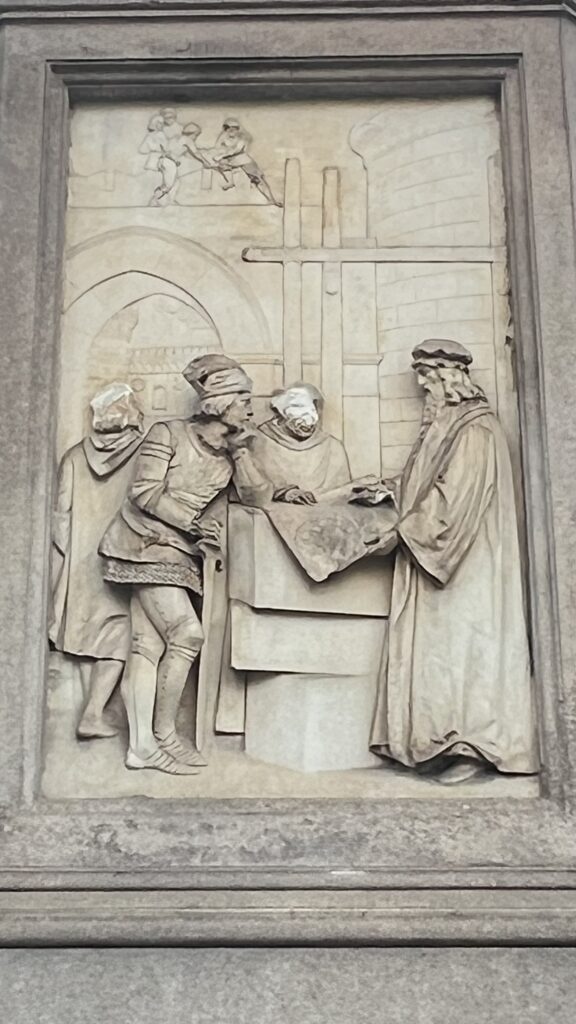
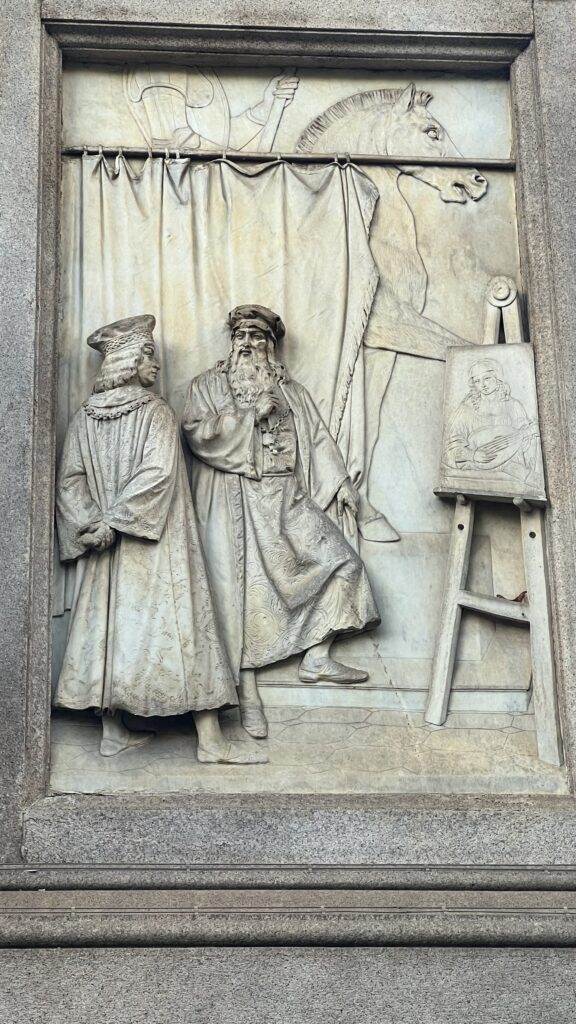
Piazza della Scala, Palazzo Marino – This is the oldest building on the square, dating back to the 16th century at which time the square did not exist and was occupied by other buildings which were demolished.
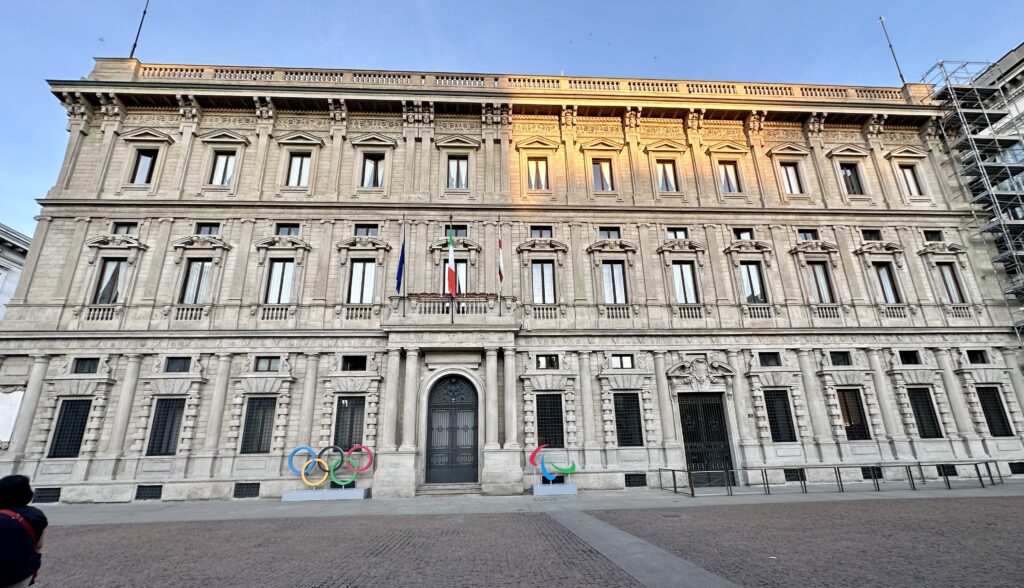
Teatro alla Scala – Plan on spending an hour here which includes visiting the theater and the museum. Considered the most prestigious opera house in the world, the inside of the theater is one of the grandest and seats 2,800 people. If a rehearsal is not in progress, the museum offers access to see the inside. Tickets to see the inside costs €12/person and includes access to a theatrical museum.
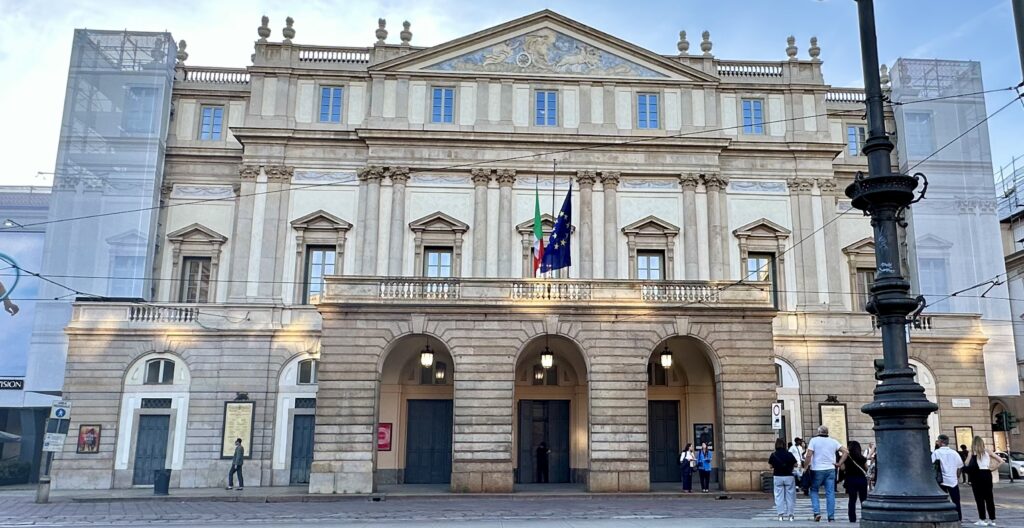
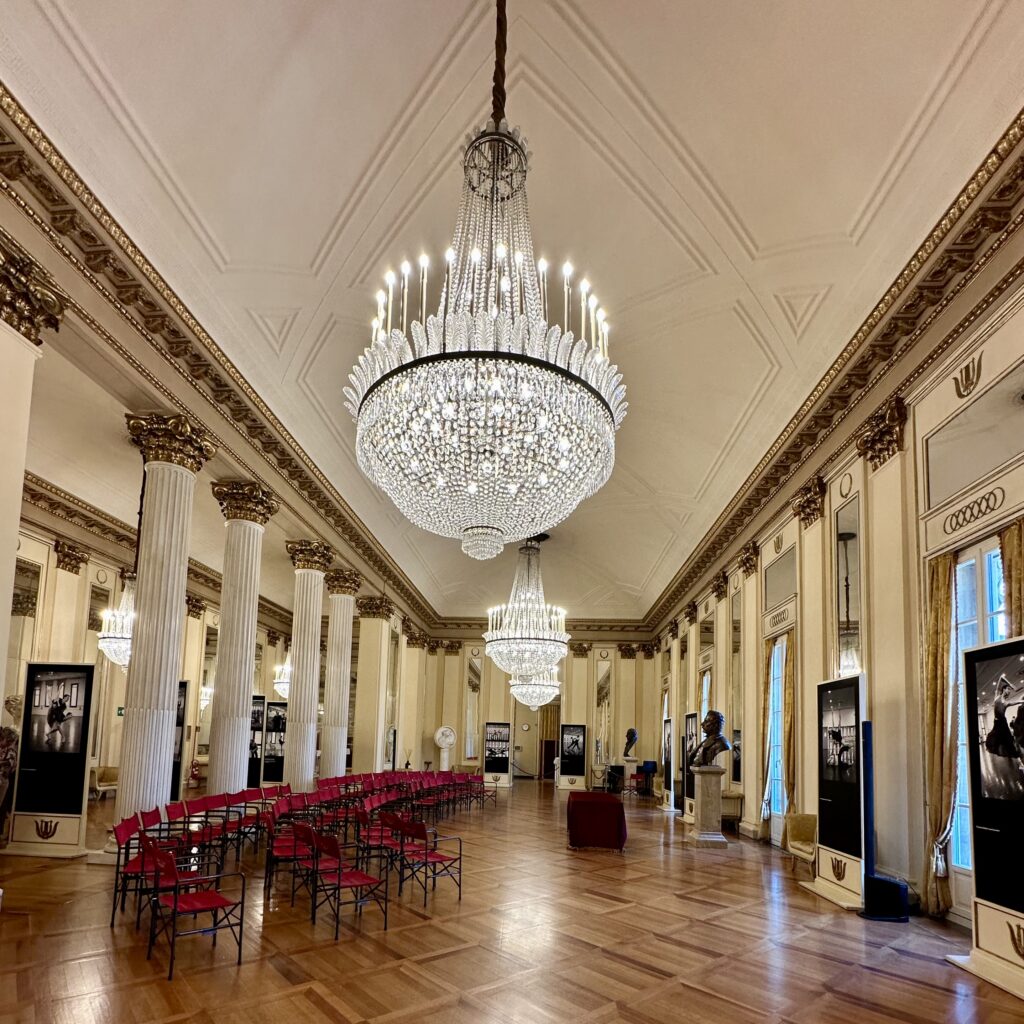
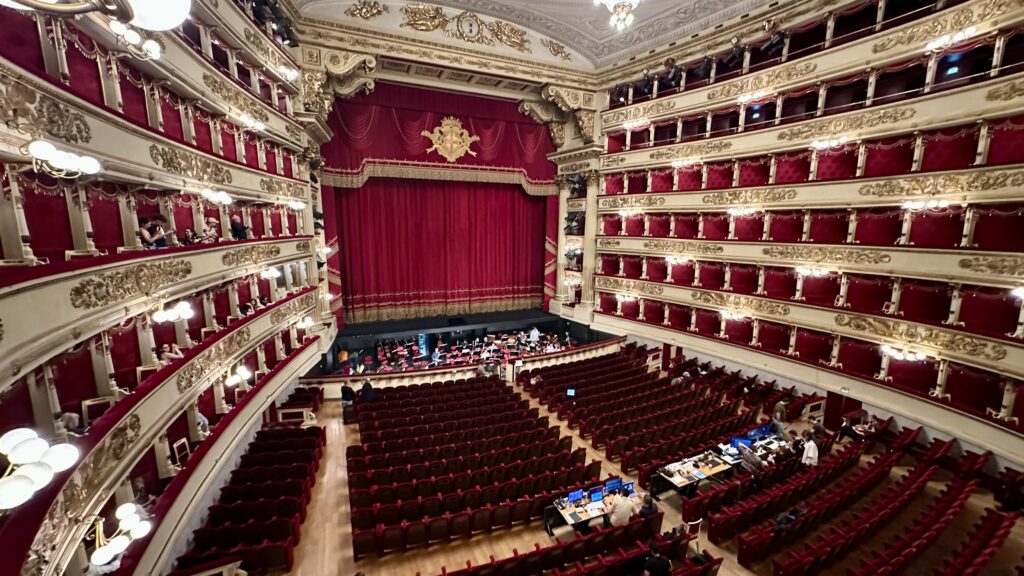
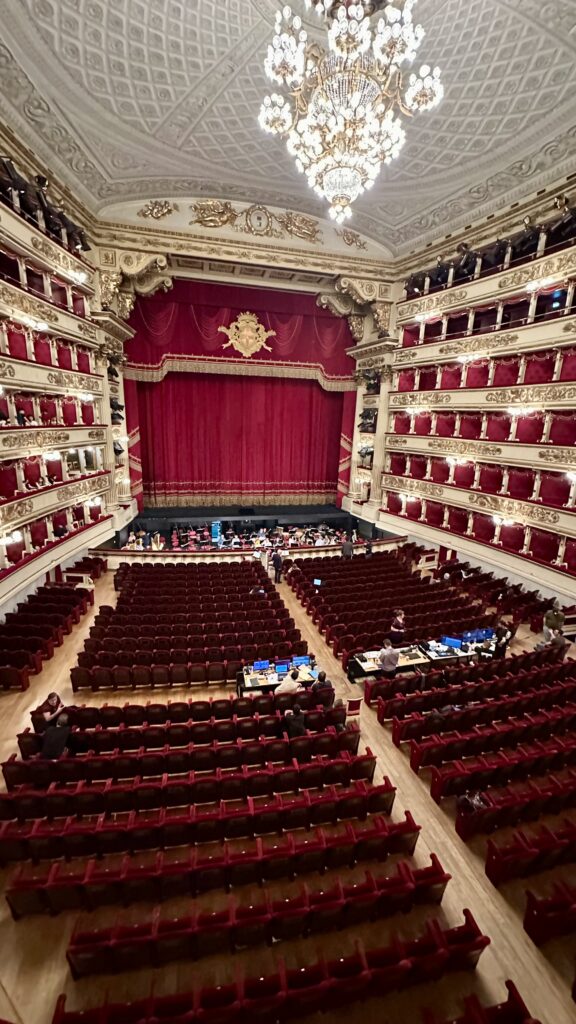
Teatro alla Scala, Museum – The museum, was opened on 8 March 1913 and was based on a large private collection which had been purchased at auction two years earlier, with funds raised both from government and private sources. The displays include costumes, set designs, autograph scores, and musical instruments of historical interest as well as paintings of musicians and actors, and a range of related paraphernalia including precious ceramic figures portraying characters from the commedia dell’arte, and board games which used to be played in the theatre’s foyer.
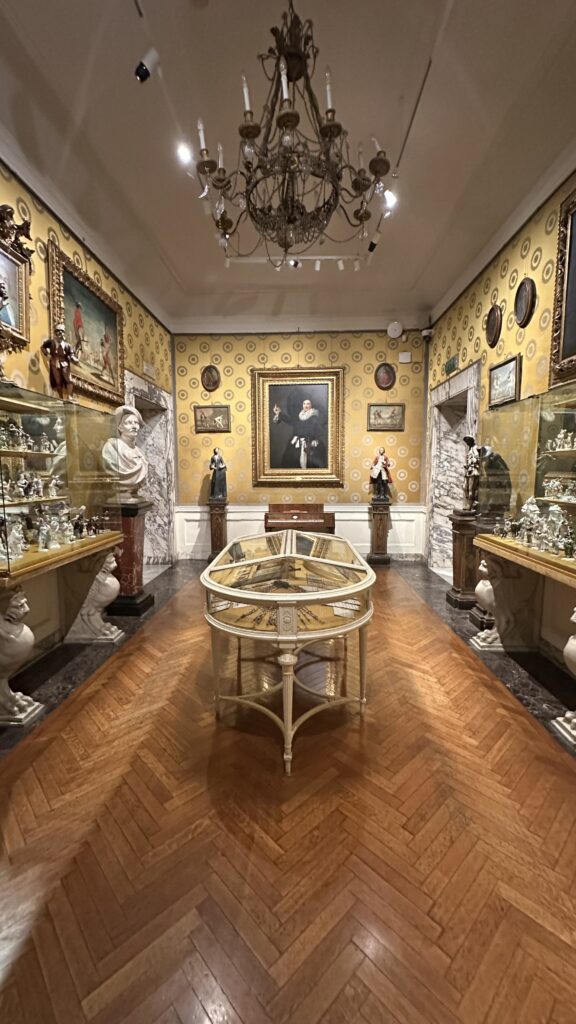
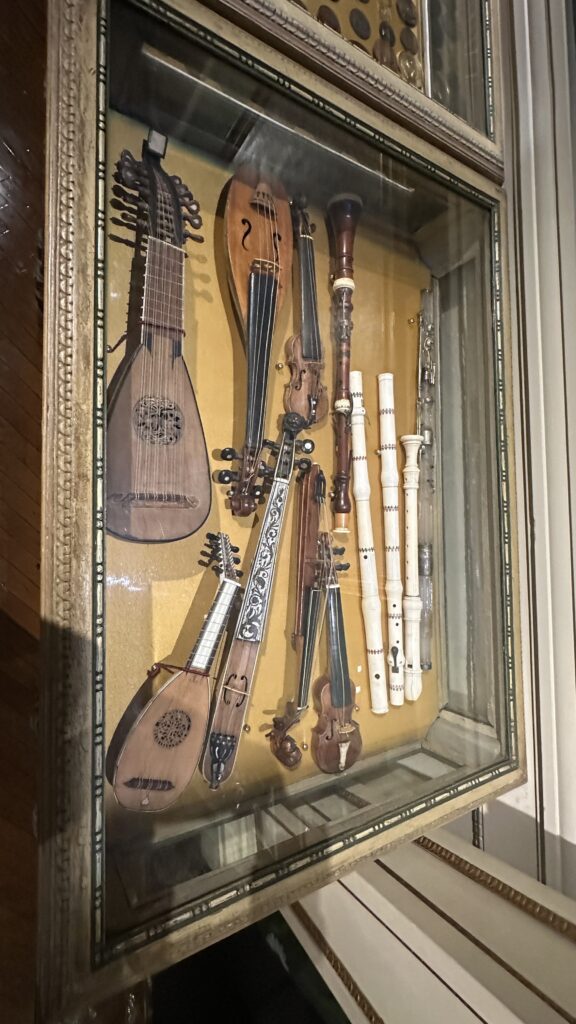
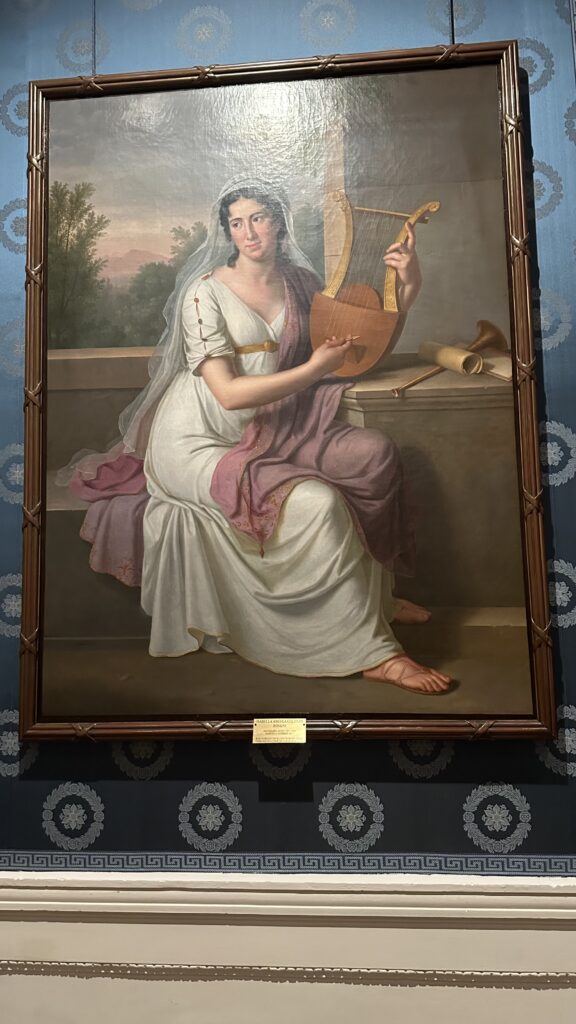
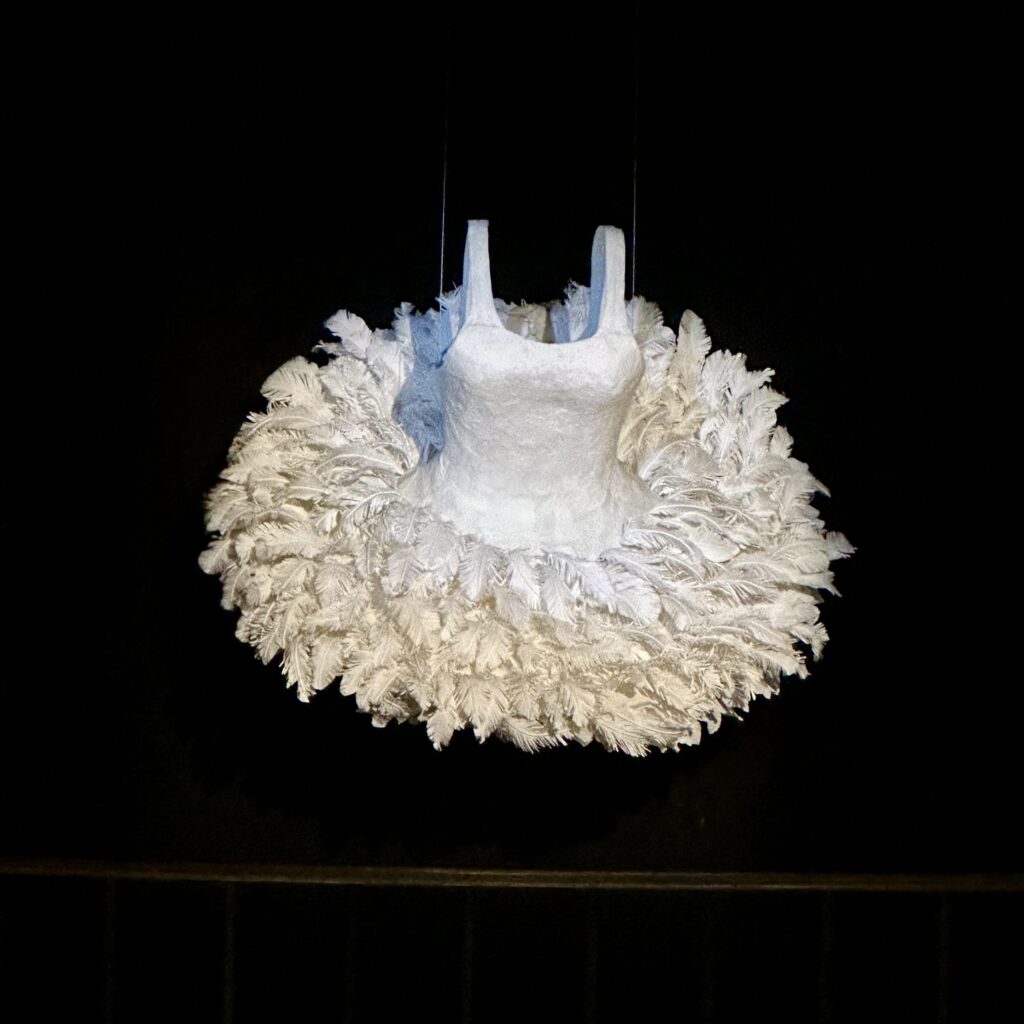
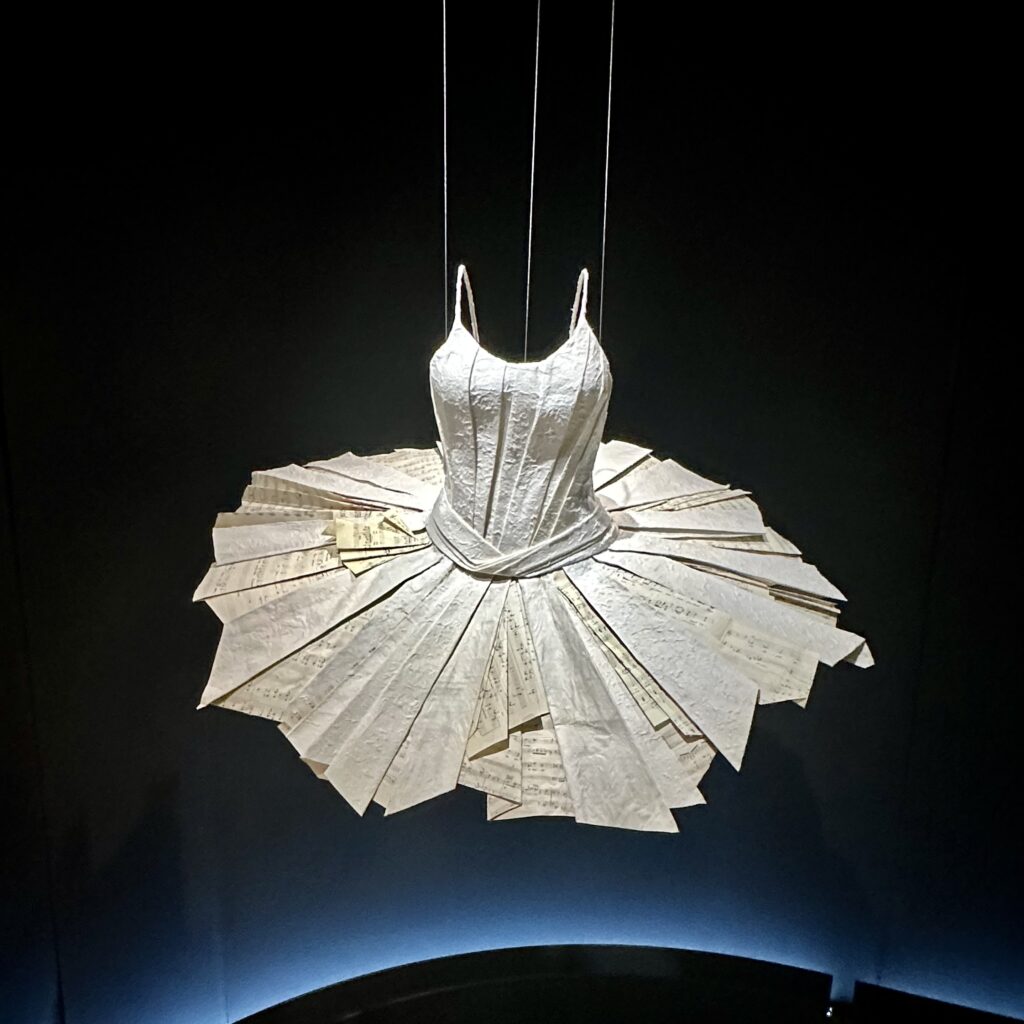
Castello Sforzesco – The Castello Sforzesco, held by the Visconti and the Sforza families who ruled Milan from 1277 to 1447 and from 1450 to 1535 respectively, was built in 15th century on the remnants of a 14th-century fortification. It was renovated and enlarged, in the 16th and 17th centuries. Extensively rebuilt in 1891–1905, it now houses several of the city’s museums and art collections.
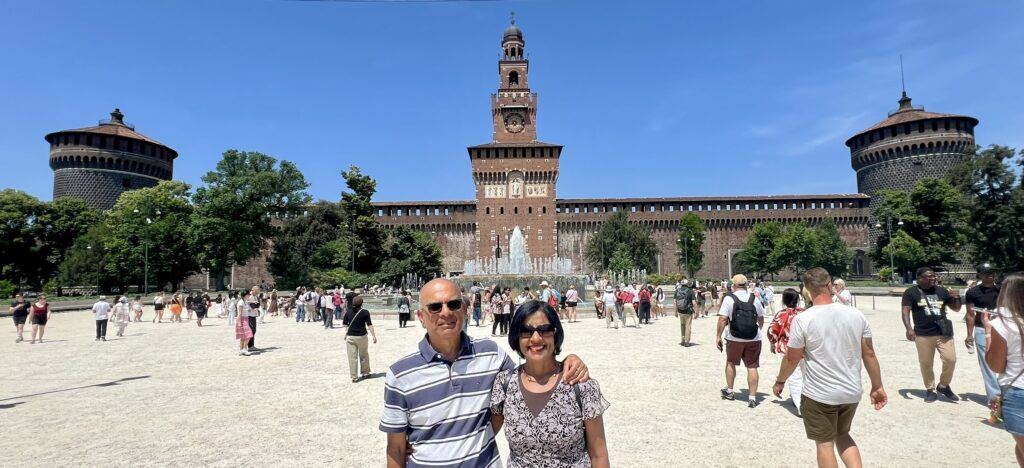
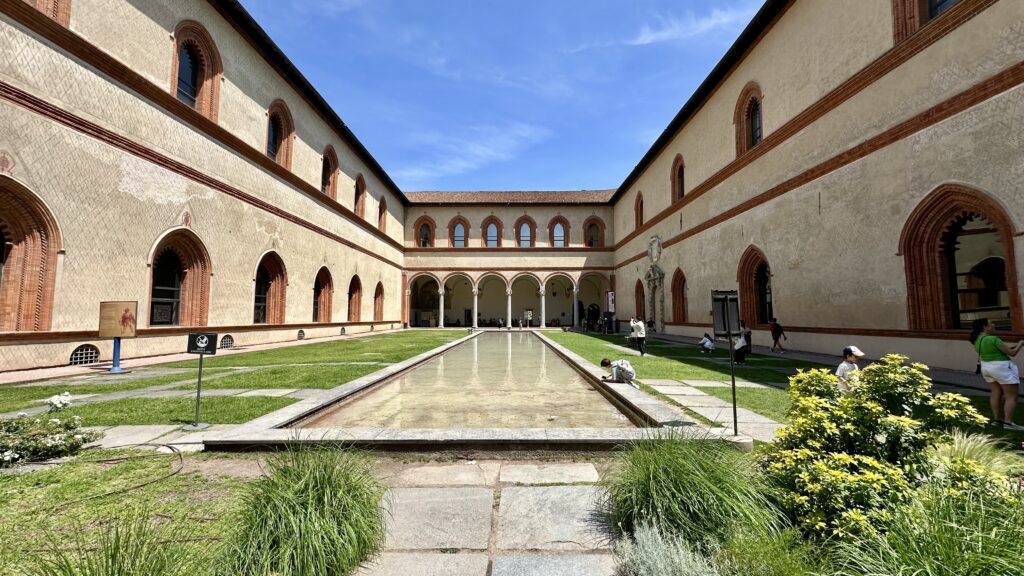
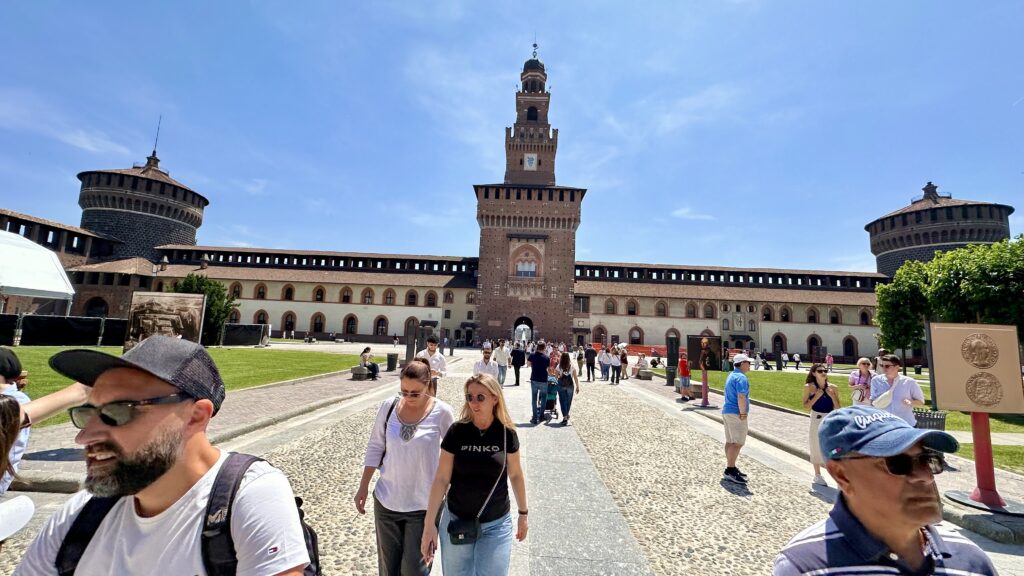
If you do not visit any of the museums, 30-45 minutes is the amount of time you will be spending here. There is not much to see as you walk inside the casle all the way to the rear gate leading to Parco Sempione.
Parco Sempione – This beautiful park is situated behind Castello Sforzesco, making it easily accessible after visiting the castle. It features tree-lined paths, lawns, and a lake. Walkers, joggers, office workers with their lunches, and parents with children in tow all enjoy the park. In the summer, concerts are held here. The park extends to the Arco della Pace (Arch of Peace), another prominent landmark in Milan.
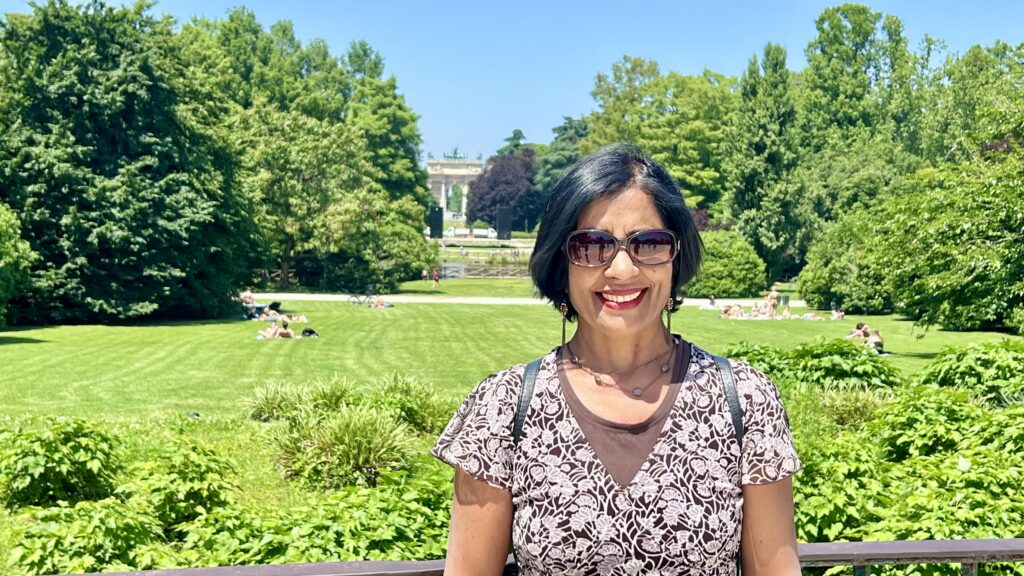
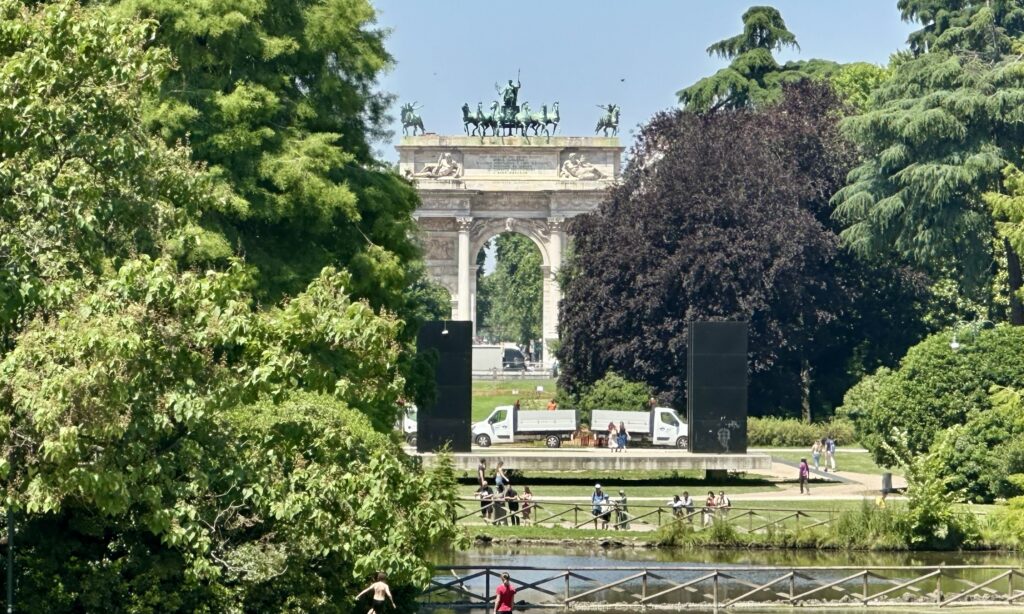
Santa Maria della Grazie – The Gothic brick church was begun about 1465, and its massive six-sided dome in the finest early Renaissance style was designed by Bramante, one of Italy’s most influential Renaissance architects. The church and adjoining refectory, which holds Leonardo da Vinci’s Last Supper – were badly damaged in World War II, and during the repair work, old sgraffito paintings in the dome were brought to light.
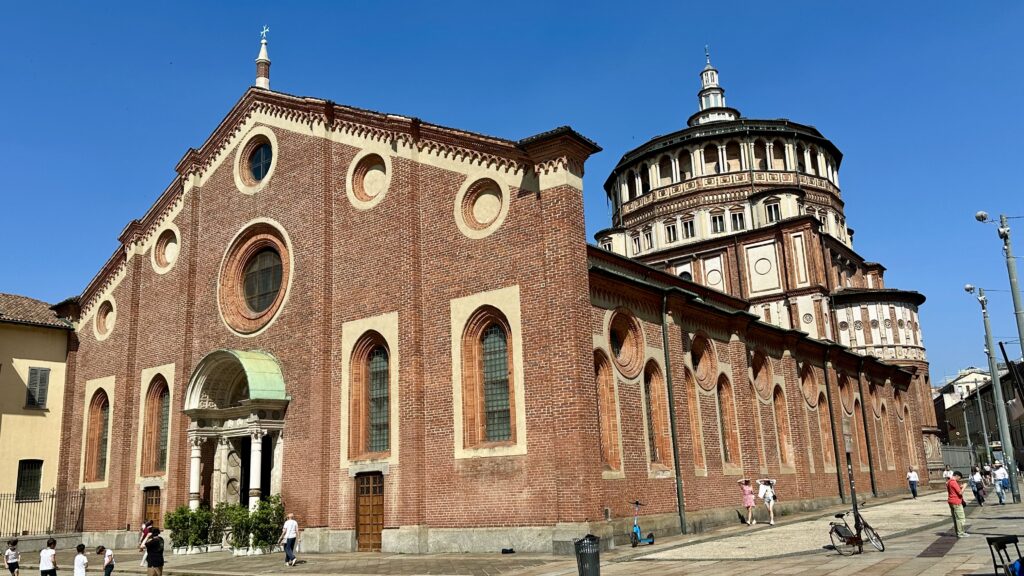
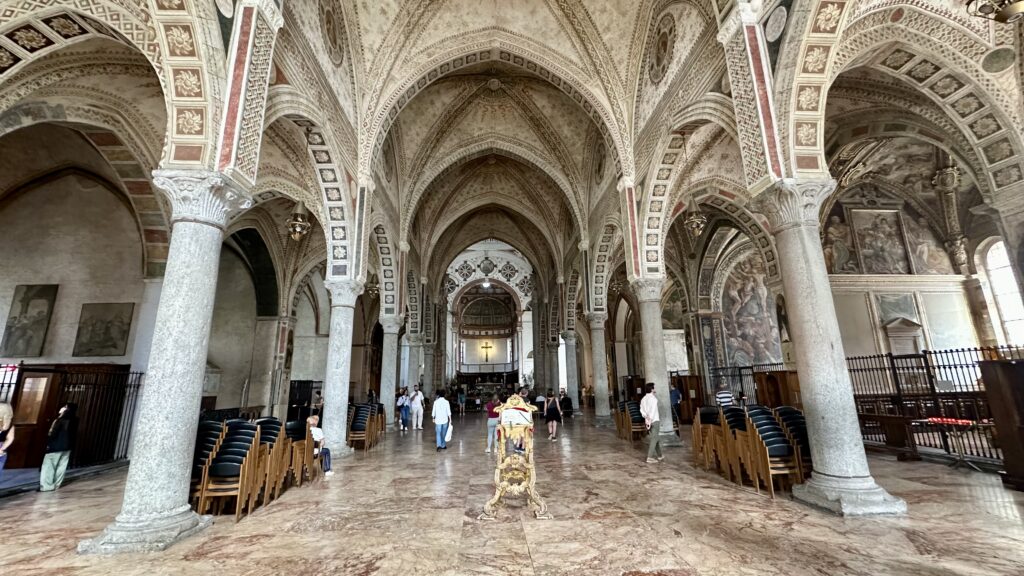
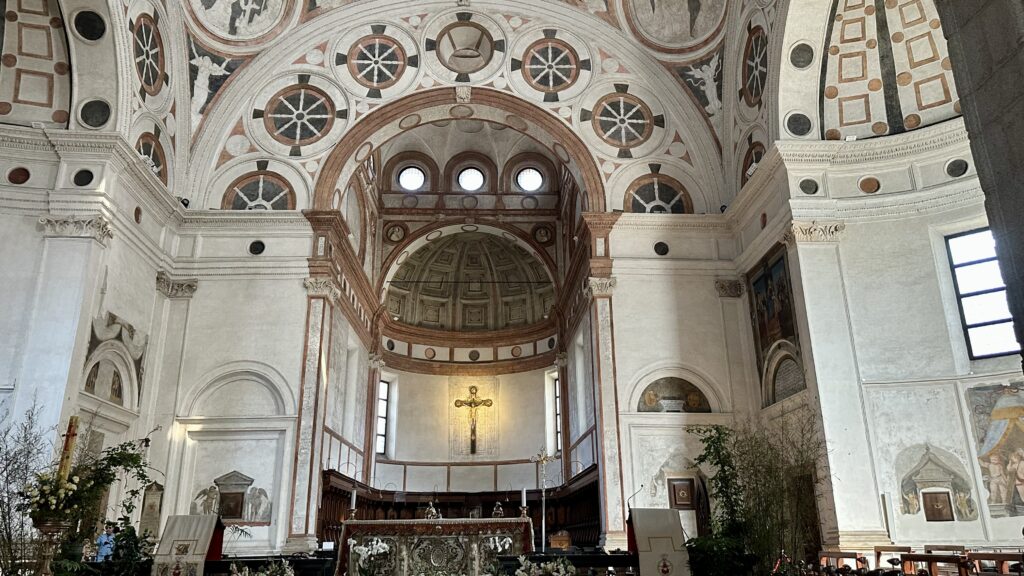
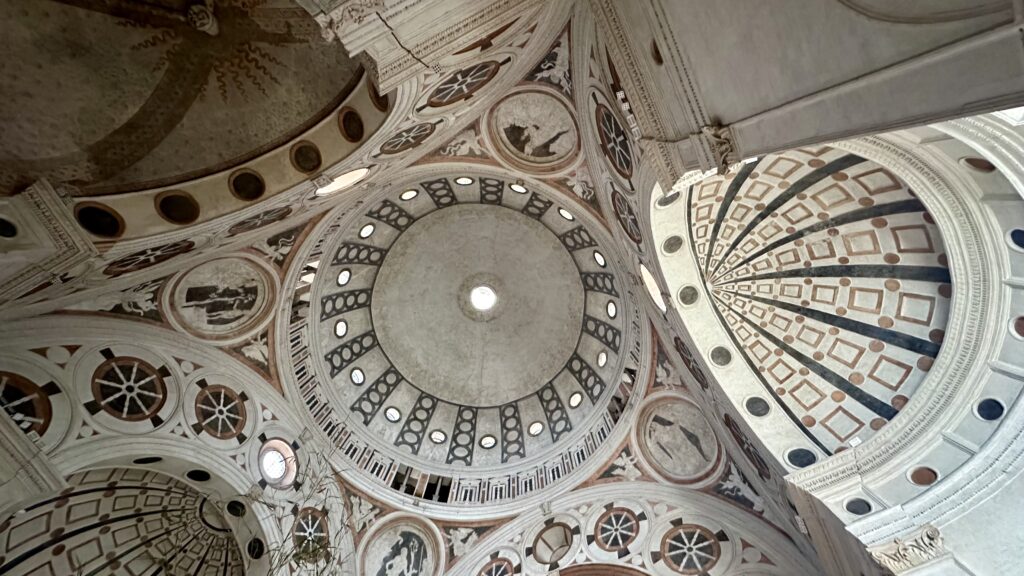
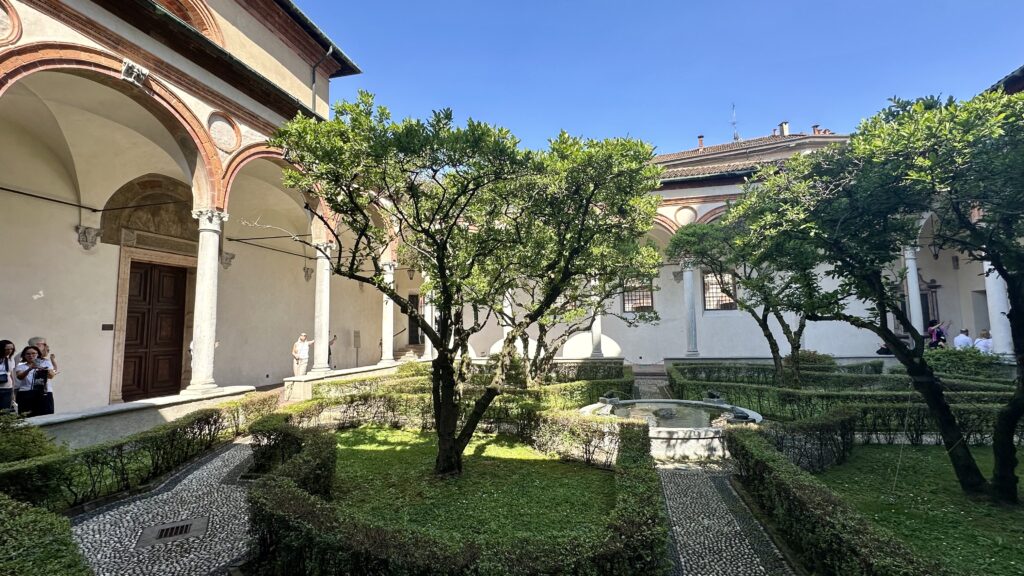
Leonardo da Vinci’s Last Supper – Adjoining the church is a modest building, known as the Cenacolo Vinciano. It was built by Solari as the refectory for the Dominicans, and is now famous for Leonardo da Vinci’s painting of The Last Supper. The Italian master created the wall painting between 1495 and 1498 on request of Ludovico il Moro. The artist depicts the moment after Jesus tells his disciples that one of them will betray him. The work shows their surprise with realistic facial expressions, lively poses and subtle light. We did not get tickets to visit the refectory to see the painting.
GuruWalk – is an international free tours community that connects travelers with guides around the world. Most tours are 2-3 hours long of walking in and around city center. At the end of the tour, tip the guide based on how much you enjoyed the walk (minimum recommended amount $10). Our walk was 2-hour long and the guide took us through many of the sites we had already visited the previous day. She also took us through Milan’s financial area. We came across some interesting buildings on our walk –
The L.O.V.E sculpture in front of the Stock Exchange building in Piazza degli Affari was built in 2010 by Italian artist Maurizio Cattelan and consists of a hand with all the fingers severed except the middle finger. Maurizio Cattelan never disclosed the exact meaning of the sculpture. The two most accepted explanations are that it represents both a critique of the Fascist salute and that it is designed as a protest against financial institutions after the 2008 financial crisis.
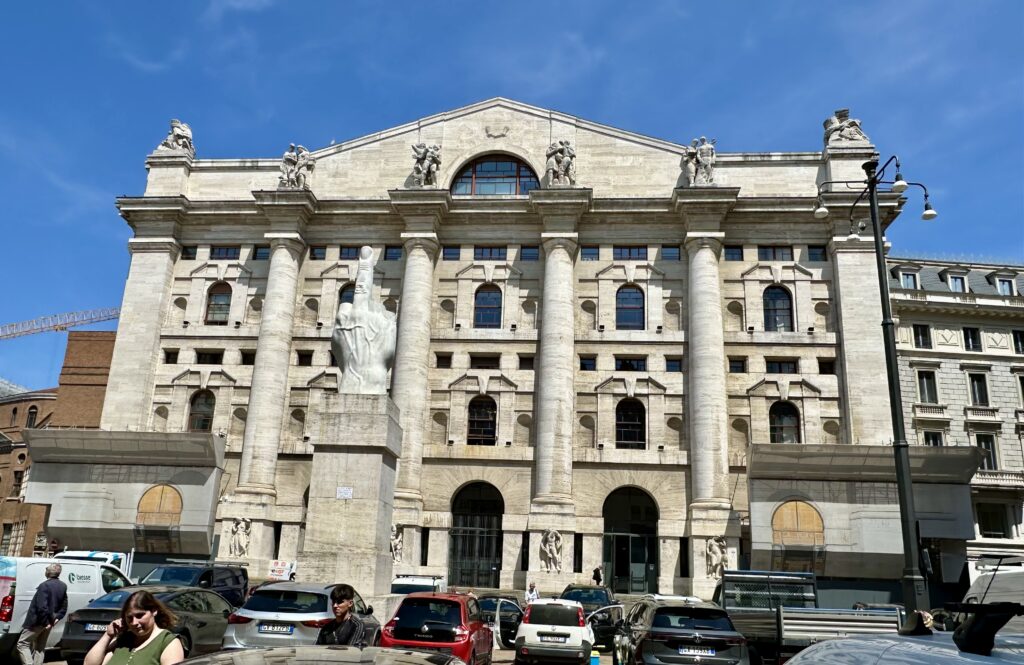
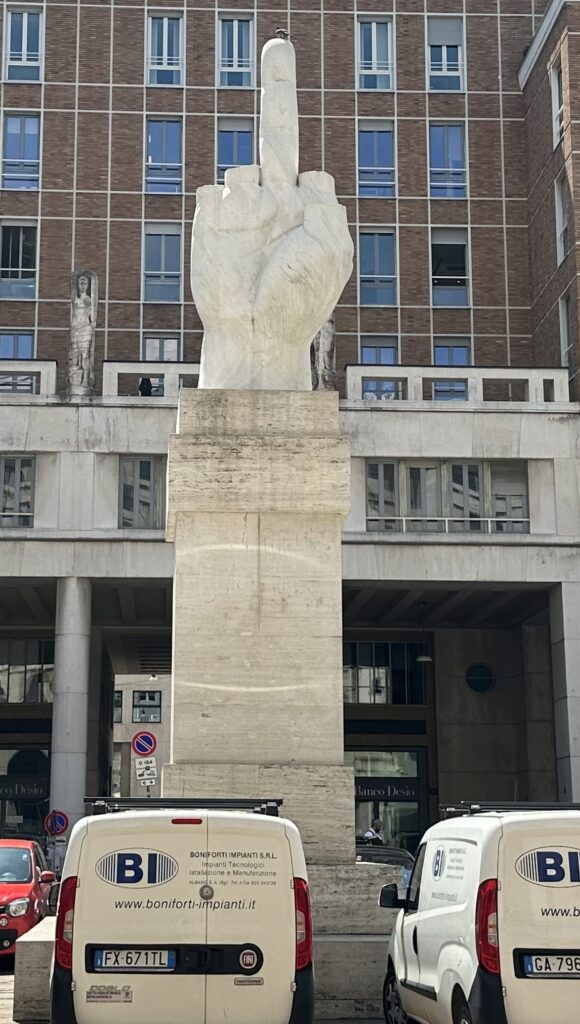
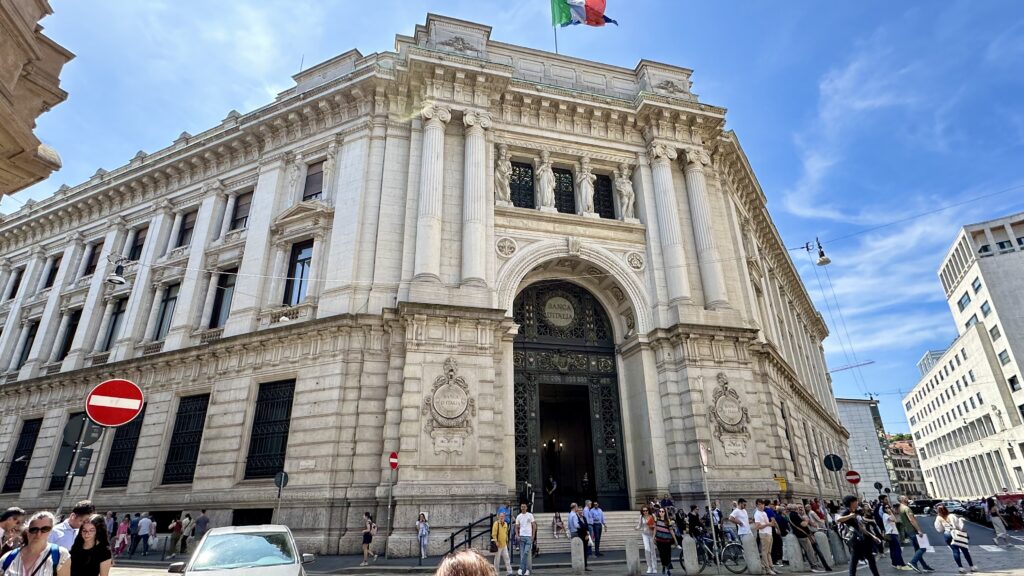
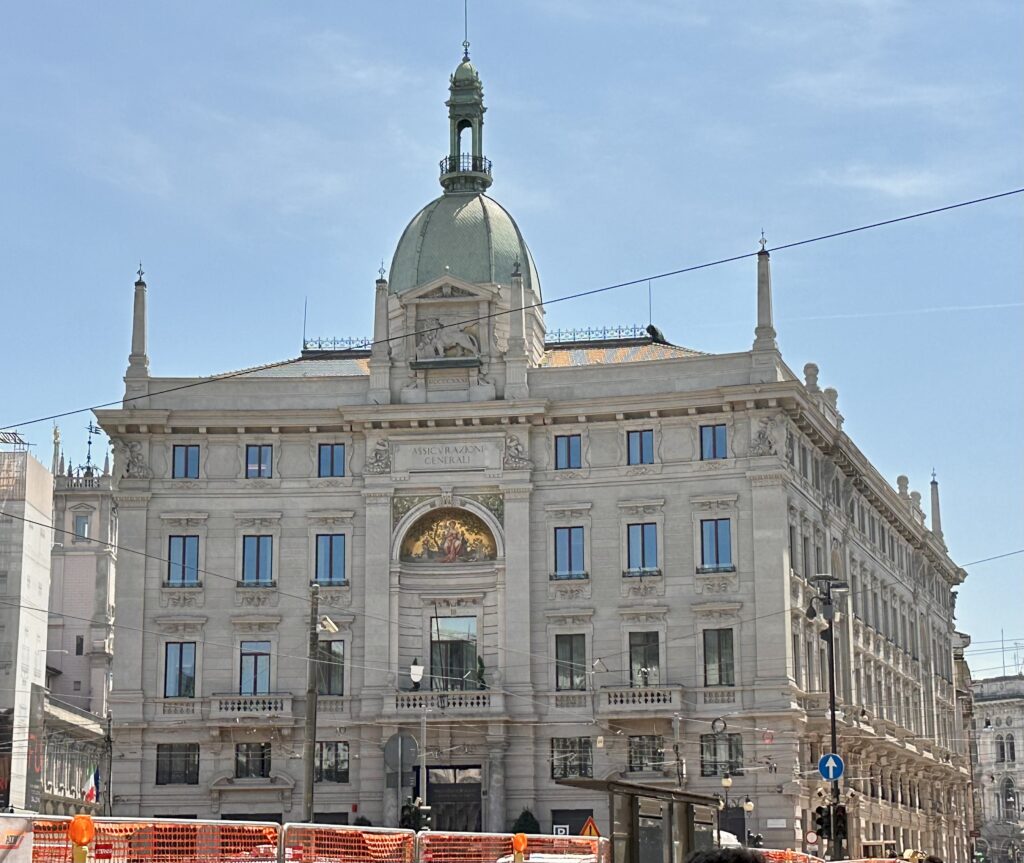
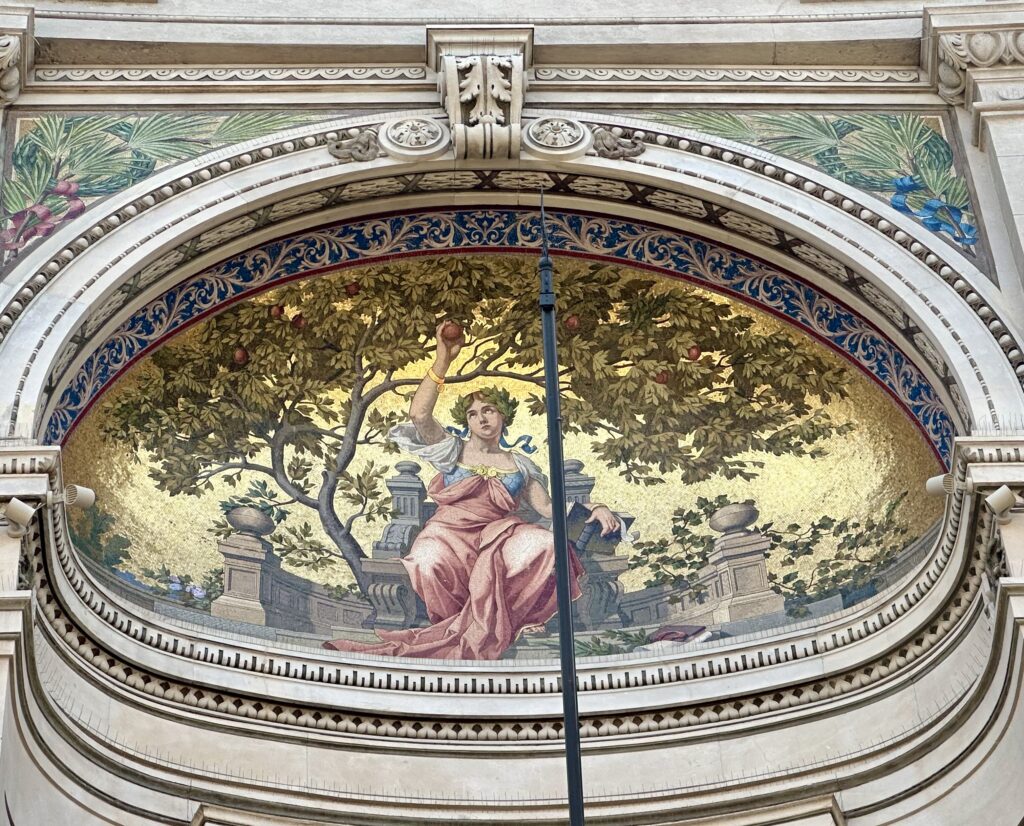
Naviglio – We took an uber to visit this area as it is a 20km or so from Milan city center. We visited the canals as it was highly recommended by the GuruWalk guide and it did not disappoint. The Naviglio Grande and Naviglio Pavese are 2 interconnected canals that were originally built for transportation and irrigation but now serve as a popular area for socializing, nightlife, and cultural activities. The Naviglio district is known for its vibrant atmosphere, with numerous bars, restaurants, art galleries, and shops lining the canals. We visited the area in the evening and spent a relaxing time sitting on the benches near the canal.
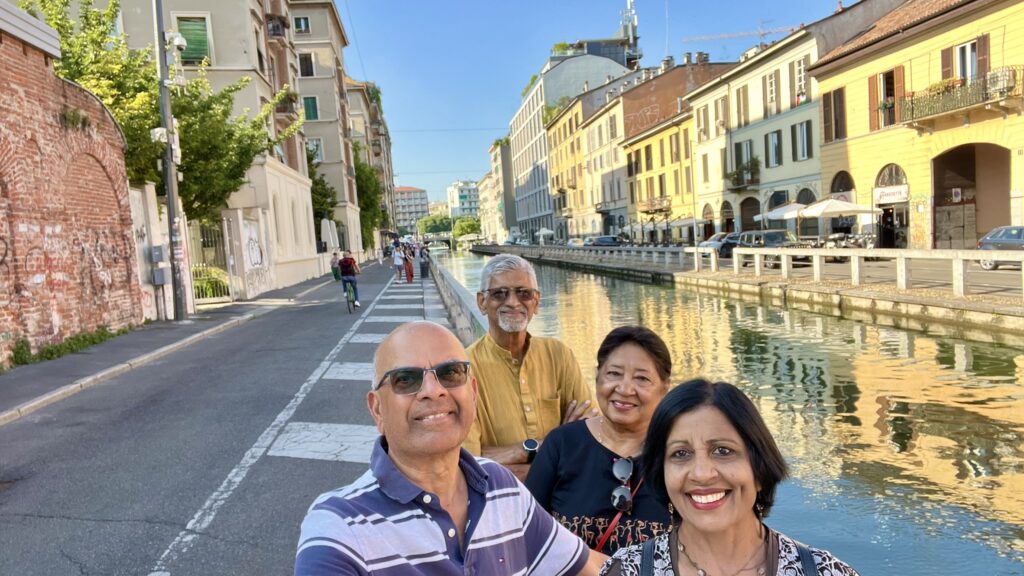
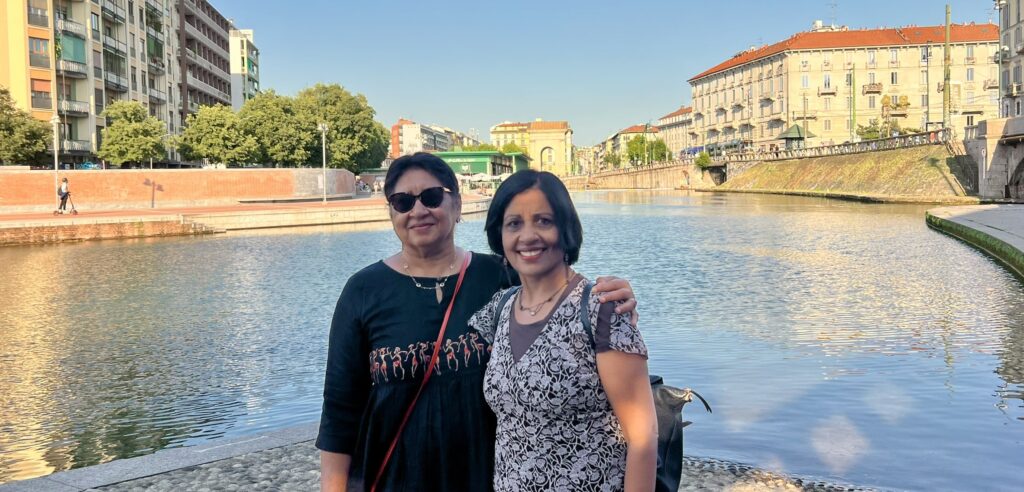
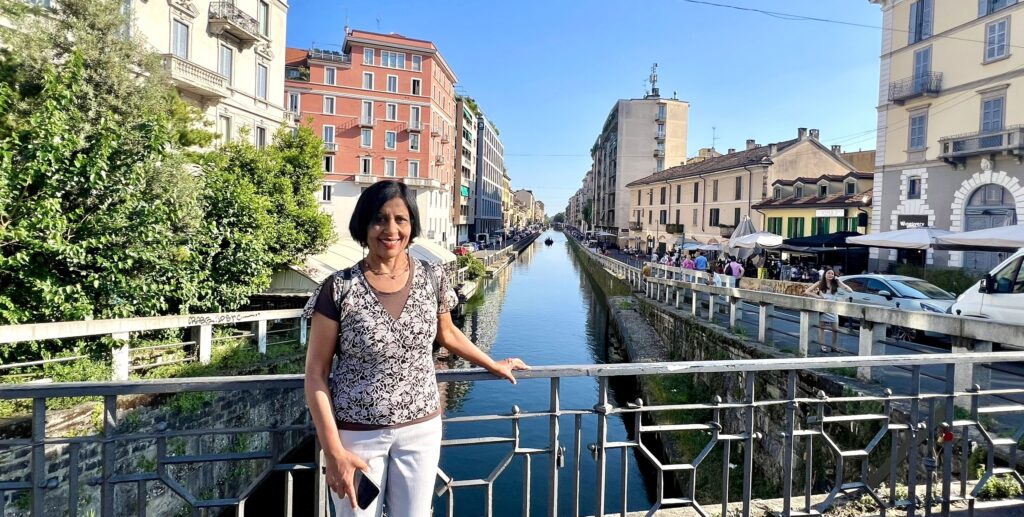
Church of Santa Maria presso San Satiro – Located at the top end of Via Torino, the bustling retail paradise, lies one of Milano’s hidden gems: the Church of Santa Maria presso San Satiro. The current church built from 1472 to 1482 lies in the site of a primitive worship place erected by Archbishop Ansperto in the 9th century, and dedicated to San Satiro, brother of Sant’Ambrogio (patron saint of Milano). Although the interior is small, it gives the impression of a much deeper space – the church is known for its false apse, attributed to the Italian architect and painter Donato Bramante.
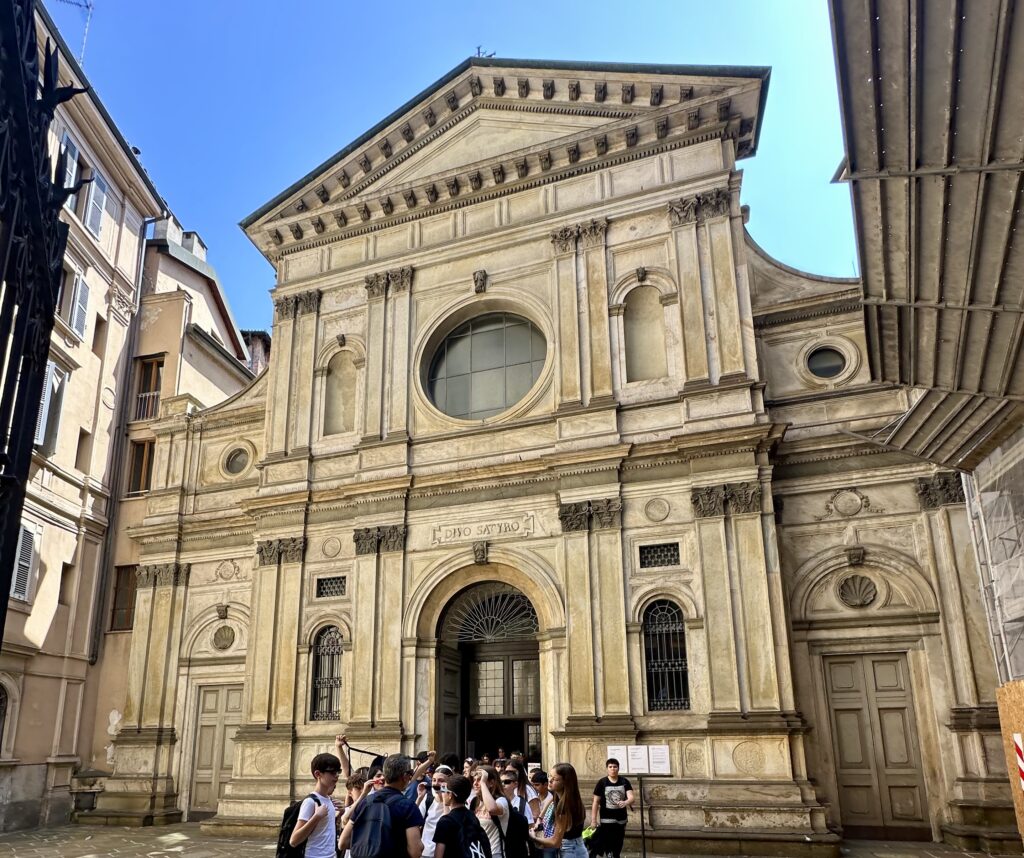
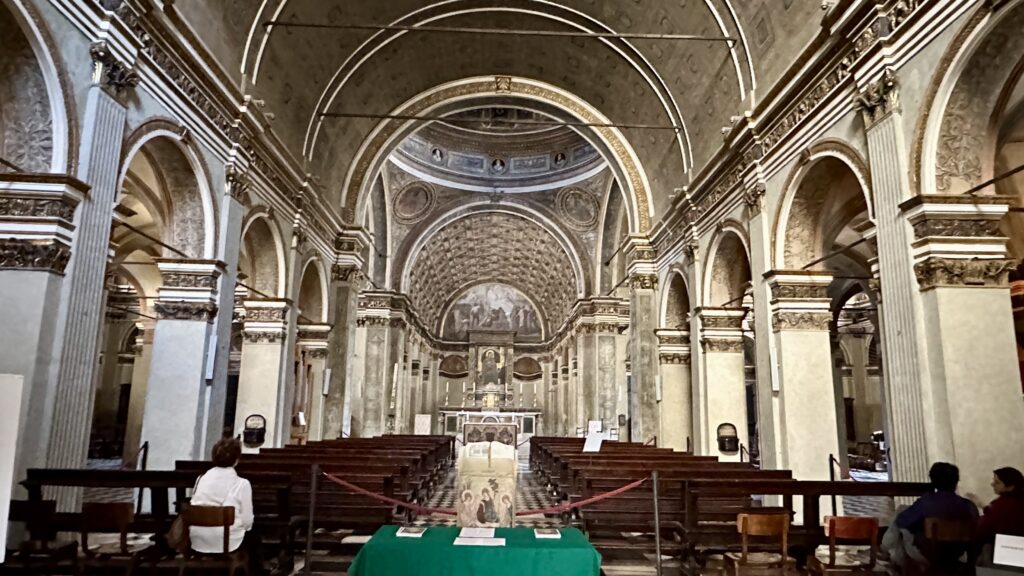
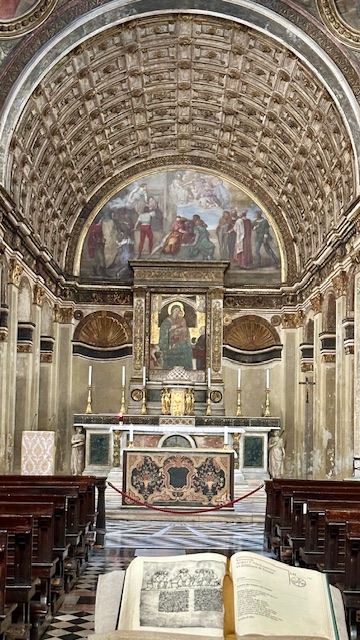
We did not have time to visit the following attractions –
- Leonardo da Vinci National Museum of Science and Technology – Housed in a former Olivetan monastery, the museum illustrates the history of science and technology from the work of early scientists into modern times. Of particular interest is the Leonardo da Vinci Gallery with working models of many of his inventions and machinery, created from da Vinci’s drawings.
- Cimitero Monumentale, near Stazione Porta Garibaldi rail station, is an outdoor gallery of Art Nouveau sculptures, many by noted Italian sculptors. Behind a monumental and flamboyant striped marble portico, these monuments mark the tombs of Milan’s rich and famous from the late 1800s through the mid-20th century.
- Bosco Verticale (Vertical Forest) in the Porta Nuova district in Milan – Once occupied by train yards and factories, the Porta Nuova is now Milan’s stylish business district. Beautifully designed pedestrian areas are surrounded by towering modern architecture including the tallest building in Italy (the UniCredit tower) and the Palazzo Lombardia, which offers stunning views from an observation area on the 39th floor. While here, be sure to take a few minutes to admire the Bosco Verticale (Vertical Forest), a pair of residential skyscrapers that are home to over 700 trees that grow from its plentiful terraces.